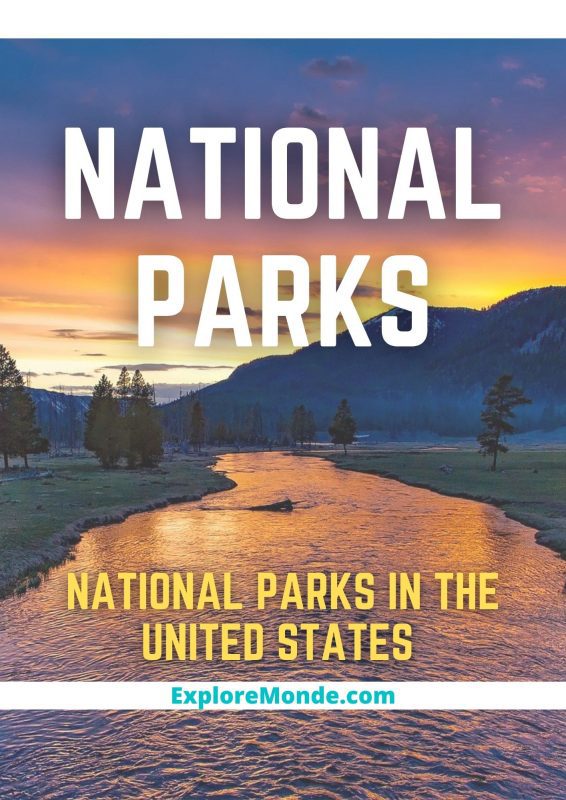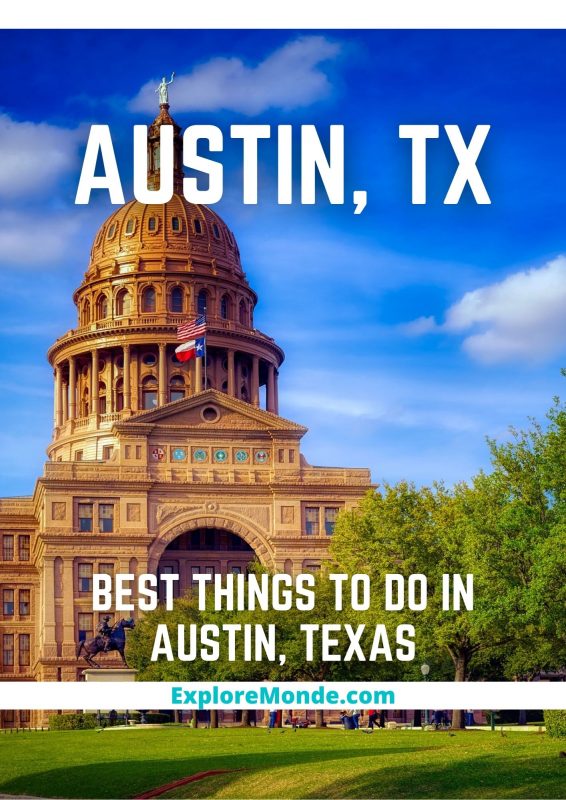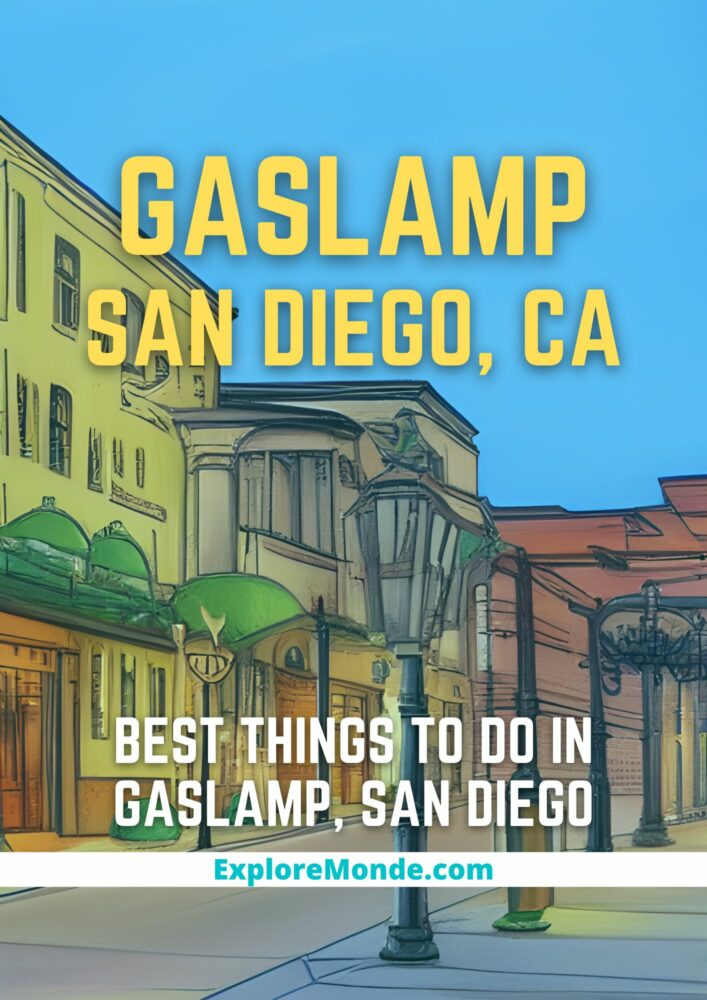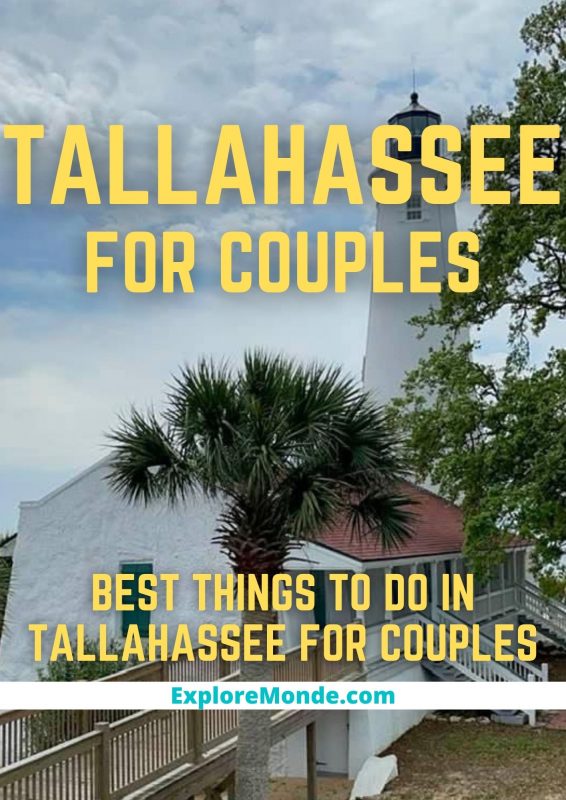This article has been reviewed by Laura and Sumeet, travel enthusiasts who have travelled to 40+ countries. (Follow @Ciao.Namaste on Youtube). Should you have any inquiries, please do not hesitate to contact at contact@exploremonde.com
There are a total of 63 national parks in the USA. California has the highest number (9) of national parks in the United States, with Alaska (8) in second place, and Utah (5) in third place. We have covered the complete list of all 63 national parks and what you can do there.
Complete List of 63 National Parks in the USA, by State
8 National Parks in Alaska
| Denali | Alaska |
| Gates of the Arctic | Alaska |
| Glacier Bay | Alaska |
| Katmai | Alaska |
| Kenai Fjords | Alaska |
| Kobuk Valley | Alaska |
| Lake Clark | Alaska |
| Wrangell – St. Elias | Alaska |
3 National Parks in Arizona
| Grand Canyon | Arizona |
| Petrified Forest | Arizona |
| Saguaro | Arizona |
1 National Park in Arkansas
| Hot Springs | Arkansas |
9 National Parks in California
| Channel Islands | California |
| Death Valley | California |
| Joshua Tree | California |
| Kings Canyon | California |
| Lassen Volcanic | California |
| Pinnacles | California |
| Redwood | California |
| Sequoia | California |
| Yosemite | California |
4 National Parks in Colorado
| Black Canyon of the Gunnison | Colorado |
| Great Sand Dunes | Colorado |
| Mesa Verde | Colorado |
| Rocky Mountain | Colorado |
3 National Parks in Florida
| Biscayne | Florida |
| Dry Tortugas | Florida |
| Everglades | Florida |
2 National Parks in Hawaii
| Haleakala | Hawaii |
| Hawai’i Volcanoes | Hawaii |
1 National Park in Indiana
| Indiana Dunes | Indiana |
1 National Park in Kentucky
| Mammoth Cave | Kentucky |
1 National Park in Maine
| Acadia | Maine |
1 National Park in Michigan
| Isle Royale | Michigan |
1 National Park in Minnesota
| Voyageurs | Minnesota |
1 National Park in Missouri
| Gateway Arch | Missouri |
1 National Park in Montana
| Glacier | Montana |
1 National Park in Nevada
| Great Basin | Nevada |
2 National Parks in New Mexico
| Carlsbad Caverns | New Mexico |
| White Sands | New Mexico |
1 National Park in North Dakota
| Theodore Roosevelt | North Dakota |
1 National Park in Ohio
| Cuyahoga Valley | Ohio |
1 National Park in Oregon
| Crater Lake | Oregon |
1 National Park in South Carolina
| Congaree | South Carolina |
2 National Parks in South Dakota
| Badlands | South Dakota |
| Wind Cave | South Dakota |
1 National Park in Tennessee
| The Great Smoky Mountains | Tennessee |
2 National Parks in Texas
| Big Bend | Texas |
| Guadalupe Mountains | Texas |
1 National Park in US Virgin Islands
| Virgin Islands | US Virgin Islands |
5 National Parks in Utah
| Arches | Utah |
| Bryce Canyon | Utah |
| Canyonlands | Utah |
| Capitol Reef | Utah |
| Zion | Utah |
1 National Park in US Virginia
| Shenandoah | Virginia |
3 National Parks in Washington
| Mount Rainier | Washington |
| North Cascades | Washington |
| Olympic | Washington |
1 National Park in West Virginia
| New River Gorge | West Virginia |
2 National Parks in Wyoming
| Grand Teton | Wyoming |
| Yellowstone | Wyoming |
1 National Park in American Samoa
| American Samoa | American Samoa |
National Parks in the USA
Here’s a list of 63 National Parks in the USA covered in this article.
1. The Great Smoky Mountains National Park, Tennessee & North Carolina
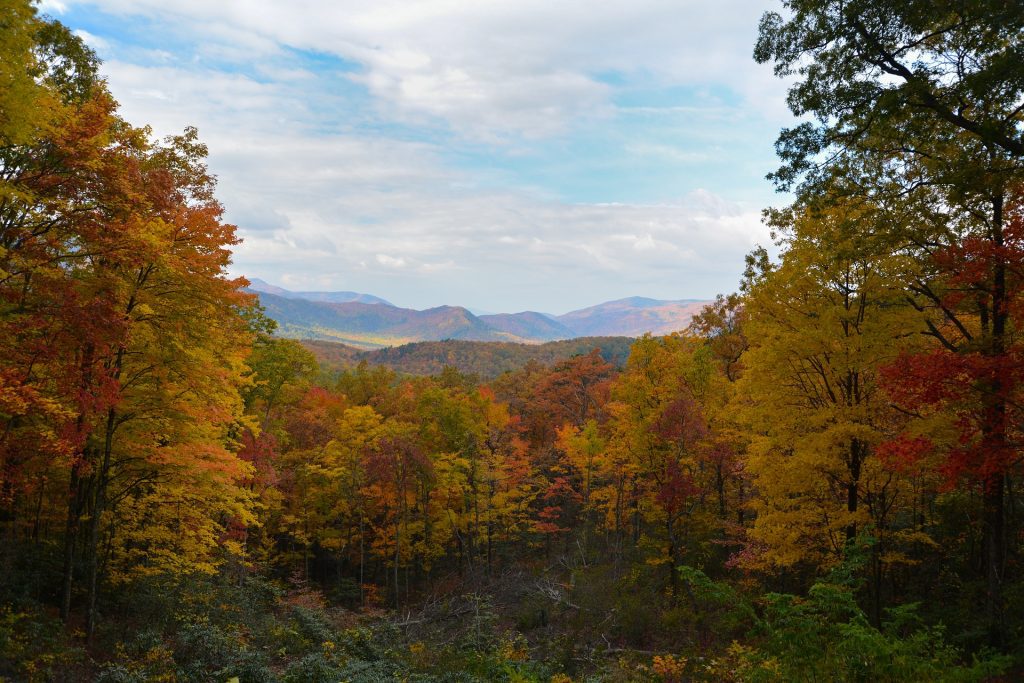
The Great Smoky Mountains National Park, straddling the border between Tennessee and North Carolina, is a haven for nature enthusiasts and adventure seekers. Renowned for its mist-covered peaks, the park is a UNESCO World Heritage Site and boasts over 800 miles of hiking trails, ranging from easy walks to challenging treks.
The trails meander through dense forests, past cascading waterfalls, and up to panoramic viewpoints, offering hikers a chance to witness the park’s rich biodiversity, including its famous wildflowers and diverse wildlife.
Camping options are plentiful, with both front-country and backcountry sites available. Front-country campgrounds provide modern amenities, making them suitable for families and less experienced campers.
In contrast, backcountry camping offers a more immersive wilderness experience for those seeking solitude and a closer connection to nature. The park’s campgrounds serve as a base for exploring its vast landscapes, from the historic Cades Cove to the towering Clingmans Dome.
Visitors are particularly enamored by the park’s ethereal beauty, especially during the fall when the foliage turns into a riot of colors. The mesmerizing morning mists, which give the mountains their “smoky” moniker, add a touch of magic to the landscape.
Additionally, the park’s cultural heritage, showcased through preserved historic buildings and tales of the Appalachian people, adds depth to the visitor experience. The combination of natural beauty, adventure opportunities, and rich history makes The Great Smoky Mountains National Park a cherished destination for many.
2. Grand Canyon National Park, Arizona
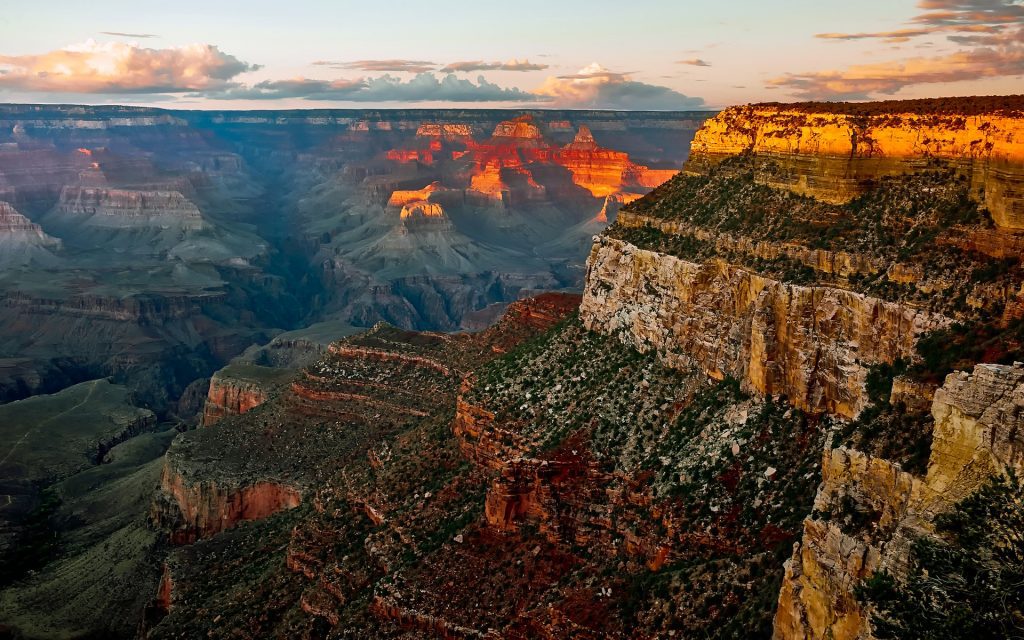
Grand Canyon National Park, located in Arizona, is one of the most iconic and breathtaking natural wonders of the world. Spanning over 277 miles in length and plunging to depths of over a mile, the Grand Canyon offers a visual spectacle of layered rock formations that tell a story of two billion years of Earth’s geological history.
The ever-changing hues of reds, oranges, and purples, especially during sunrise and sunset, leave visitors spellbound.
Bestseller Drones
For adventure enthusiasts, the park provides a plethora of hiking options. The South Rim’s Bright Angel and South Kaibab trails are among the most popular, offering varying levels of difficulty and showcasing different perspectives of the canyon’s vastness.
For those seeking a more challenging experience, the North Rim, which is less frequented, offers remote trails with unparalleled views.
Camping in the Grand Canyon is an experience in itself. Whether you choose the established campgrounds like Mather and Desert View or opt for backcountry camping permits, sleeping under a canopy of stars with the canyon as your backdrop is unforgettable.
Visitors are particularly enamored by the park’s ability to offer both tranquility and adventure. The sheer magnitude and beauty of the canyon evoke a sense of awe and wonder, while the diverse flora and fauna, including the California condor, add to its charm.
The Grand Canyon is not just a destination; it’s an experience that resonates deeply with all who visit, leaving them with memories that last a lifetime.
Bestseller GoPro Selfie Sticks
3. Yosemite National Park, California
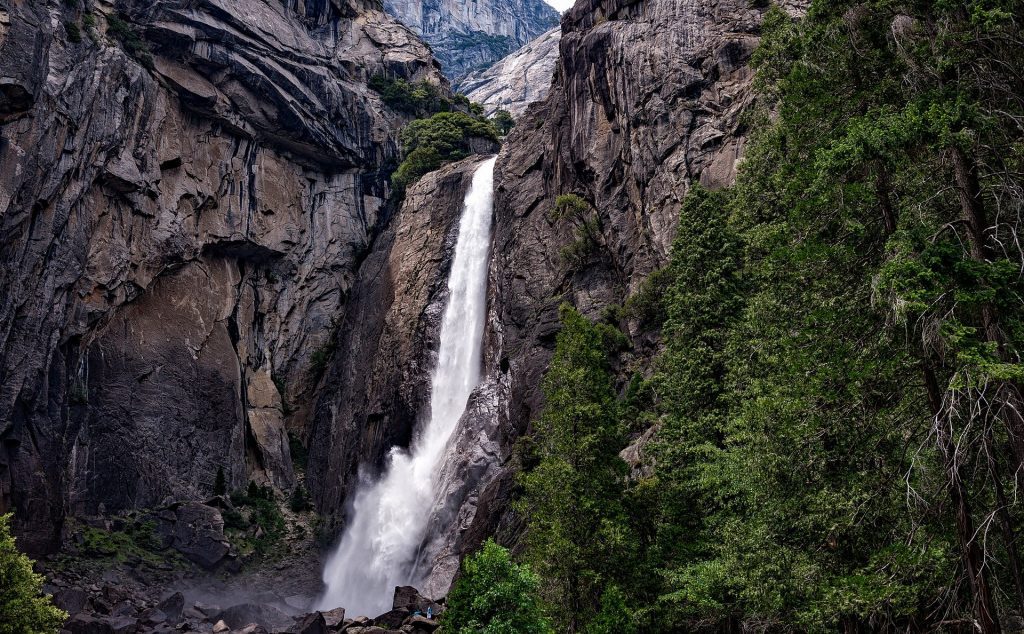
Yosemite National Park, located in California, is a testament to nature’s grandeur and beauty. Spanning over 1,187 square miles, this iconic park is renowned for its breathtaking granite cliffs, giant sequoia groves, and cascading waterfalls.
One of the park’s most iconic landmarks is El Capitan, a sheer granite rock face that attracts climbers from around the world. The park’s diverse landscape also includes valleys, meadows, and ancient giant sequoias in the Mariposa Grove.
For outdoor enthusiasts, Yosemite offers a plethora of hiking options, ranging from easy walks like the Bridalveil Fall Trail to challenging hikes up Half Dome. With over 800 miles of trails, hikers can immerse themselves in the park’s scenic beauty, encountering picturesque vistas, serene meadows, and dense forests. The park’s elevation gradient ensures a variety of plant and animal life, making every hike a unique experience.
Camping in Yosemite is an experience in itself. The park boasts 13 campgrounds, some of which are open year-round. Whether you’re pitching a tent in the valley or opting for a more remote wilderness experience, the starlit skies and the sounds of nature provide an unparalleled camping adventure.
Visitors often rave about the transformative experience Yosemite offers. The sheer scale of its natural wonders, combined with the serenity and tranquility of the wilderness, leaves an indelible mark on those who visit. The park’s ability to make one feel both insignificant in the face of nature’s vastness and deeply connected to the earth is what keeps visitors returning year after year.
Bestseller Copper Water Bottles
4. Rocky Mountain National Park, Colorado
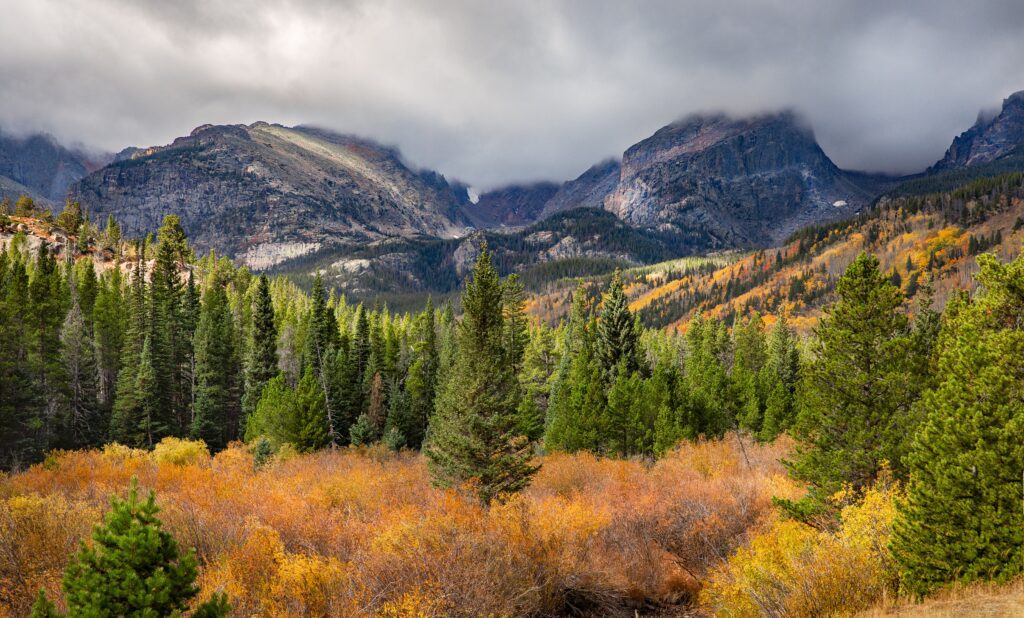
Nestled in the heart of Colorado, Rocky Mountain National Park (RMNP) stands as a testament to nature’s grandeur. Spanning over 415 square miles, this national treasure boasts a diverse landscape of majestic mountains, verdant forests, and pristine alpine lakes. It’s no wonder that it attracts millions of visitors each year, eager to immerse themselves in its breathtaking beauty.
For hiking enthusiasts, RMNP is nothing short of a dream. With over 300 miles of trails, hikers of all skill levels can find a path that suits their abilities and desires. From gentle walks along the Bear Lake Trail to the challenging ascent up Longs Peak, there’s a trail for everyone. Each route offers its own unique vistas, from panoramic mountain views to serene meadows bursting with wildflowers.
Camping in RMNP is an experience in itself. Whether you prefer the comfort of established campgrounds like Moraine Park or the ruggedness of backcountry camping, the park offers a variety of options to suit every adventurer’s taste. Sleeping under the vast Colorado sky, surrounded by the sounds of nature, is an experience that stays with you long after you’ve left.
Visitors often rave about the park’s diverse wildlife. From majestic elk to playful marmots, RMNP is home to a plethora of creatures that can often be spotted on hikes or even from the comfort of one’s campsite. The combination of stunning landscapes, diverse hiking trails, and the opportunity to connect with nature makes Rocky Mountain National Park a beloved destination for many. Whether you’re seeking adventure or tranquility, RMNP promises an unforgettable experience.
5. Zion National Park, Utah
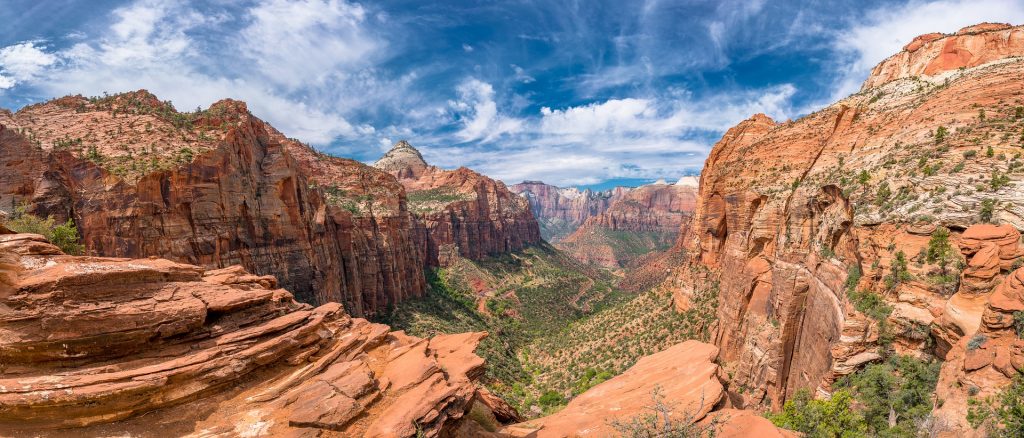
Zion National Park, located in Utah, is a mesmerizing testament to nature’s grandeur and beauty. Spanning over 229 square miles, the park is a haven for outdoor enthusiasts and nature lovers alike. One of the standout features of Zion is its dramatic red cliffs, which rise majestically against the backdrop of azure skies, offering a visual spectacle that leaves visitors in awe.
Bestseller Cupholder Bottles
Hiking in Zion is an experience like no other. The park boasts a plethora of trails that cater to both beginners and seasoned hikers. The iconic “Angels Landing” is a challenging trek that rewards hikers with panoramic views of the park, while the “Narrows” offers a unique hike through the narrowest sections of Zion Canyon, with some parts requiring wading through the Virgin River. The “Emerald Pools” trail, on the other hand, is a more relaxed hike leading to serene waterfalls and reflective pools.
Camping in Zion is equally rewarding. The park offers three campgrounds: South and Watchman Campgrounds in Zion Canyon and the Lava Point Campground about an hour’s drive from the main attractions. These sites provide an immersive experience, allowing visitors to sleep under a canopy of stars, surrounded by the park’s natural beauty.
Visitors to Zion often rave about the surreal landscapes, the diverse range of flora and fauna, and the sense of tranquility that the park offers. The combination of challenging hikes, serene vistas, and the opportunity to connect with nature makes Zion National Park a must-visit destination for many.
6. Yellowstone National Park, Wyoming
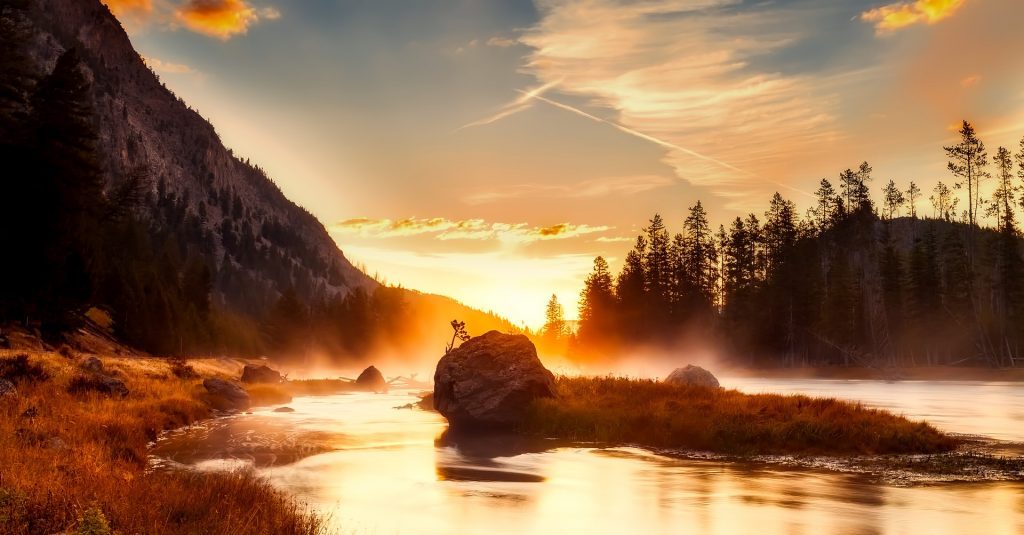
Yellowstone National Park, located primarily in Wyoming, is a natural wonder that has captivated the hearts of countless visitors. Established in 1872, it holds the distinction of being the world’s first national park.
One of its most iconic features is the Old Faithful geyser, which erupts with clockwork regularity, drawing crowds who marvel at its powerful display.
The park offers a plethora of hiking options, catering to both novice and experienced hikers. With over 1,000 miles of trails, adventurers can traverse through diverse landscapes, from dense forests and open meadows to rugged mountain terrains and serene lakeshores. The trails provide an intimate experience of the park’s unique geothermal features, including hot springs, mud pots, and fumaroles.
Camping in Yellowstone is an experience in itself. The park boasts 12 campgrounds with over 2,000 sites. Whether you’re pitching a tent under a canopy of stars or parking an RV amidst the wilderness, the immersive experience of being in nature is unparalleled. Waking up to the sounds of chirping birds, the sight of grazing bison, or the distant howl of wolves is truly magical.
Visitors love Yellowstone not just for its natural beauty but also for the rich biodiversity it shelters. From grizzly bears and wolves to elks and bald eagles, the park is a haven for wildlife enthusiasts.
The combination of its geothermal wonders, diverse landscapes, abundant wildlife, and the sense of adventure it evokes makes Yellowstone National Park a cherished destination for many.
7. Olympic National Park, Washington
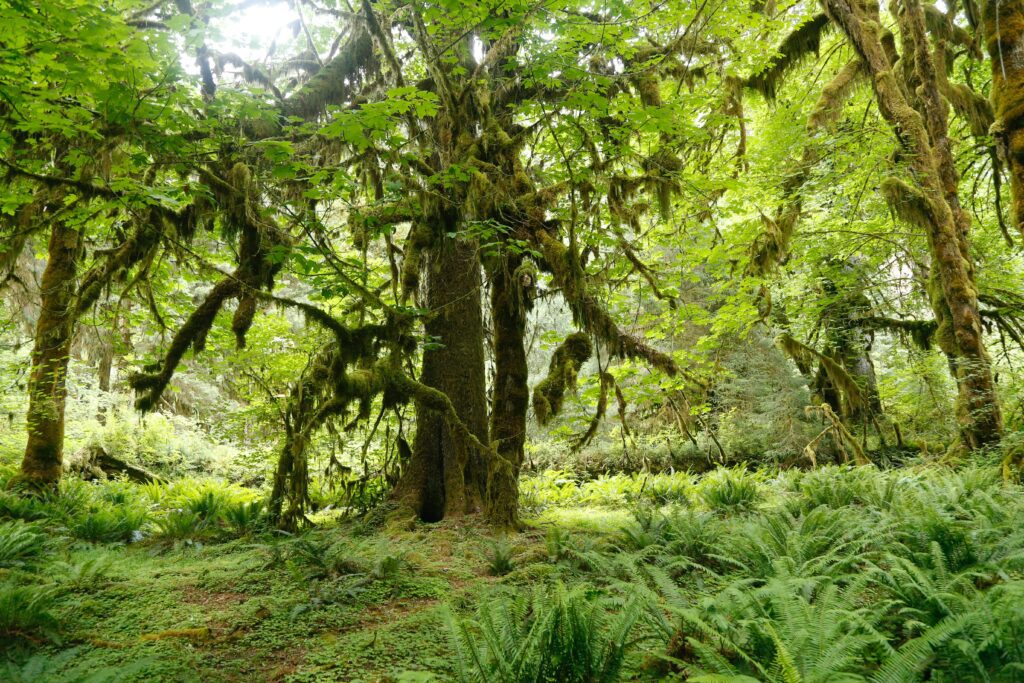
Olympic National Park, located in Washington, is a breathtaking testament to nature’s grandeur and diversity.
Spanning nearly a million acres, the park is a mosaic of ecosystems, from the rugged Pacific coastline to the majestic peaks of the Olympic Mountains, and the lush temperate rainforests in between.
This vastness offers a plethora of hiking options for adventurers of all levels. Whether you’re traversing the scenic Hall of Mosses Trail in the Hoh Rainforest, challenging yourself on the Hurricane Ridge, or strolling along the shores of Rialto Beach, there’s a trail for every hiker.
Camping enthusiasts are equally spoilt for choice. The park boasts 16 campgrounds, each offering a unique experience. Coastal campgrounds like Kalaloch and Mora let you drift asleep to the sound of crashing waves, while forested sites such as Heart O’ the Hills immerse you in a canopy of ancient trees.
For the more adventurous, backcountry camping permits are available, allowing for multi-day hikes and a deeper connection with the wilderness.
Visitors are often enamored by the park’s unparalleled beauty and the serenity it offers. The diverse landscapes, from misty rainforests to alpine meadows bursting with wildflowers, provide a refreshing escape from the hustle and bustle of daily life.
Bestseller Drones
Additionally, the park’s rich biodiversity, including iconic species like Roosevelt elk and black bears, adds to its allure. It’s no wonder that for many, Olympic National Park is not just a destination, but a transformative experience.
8. Acadia National Park, Maine
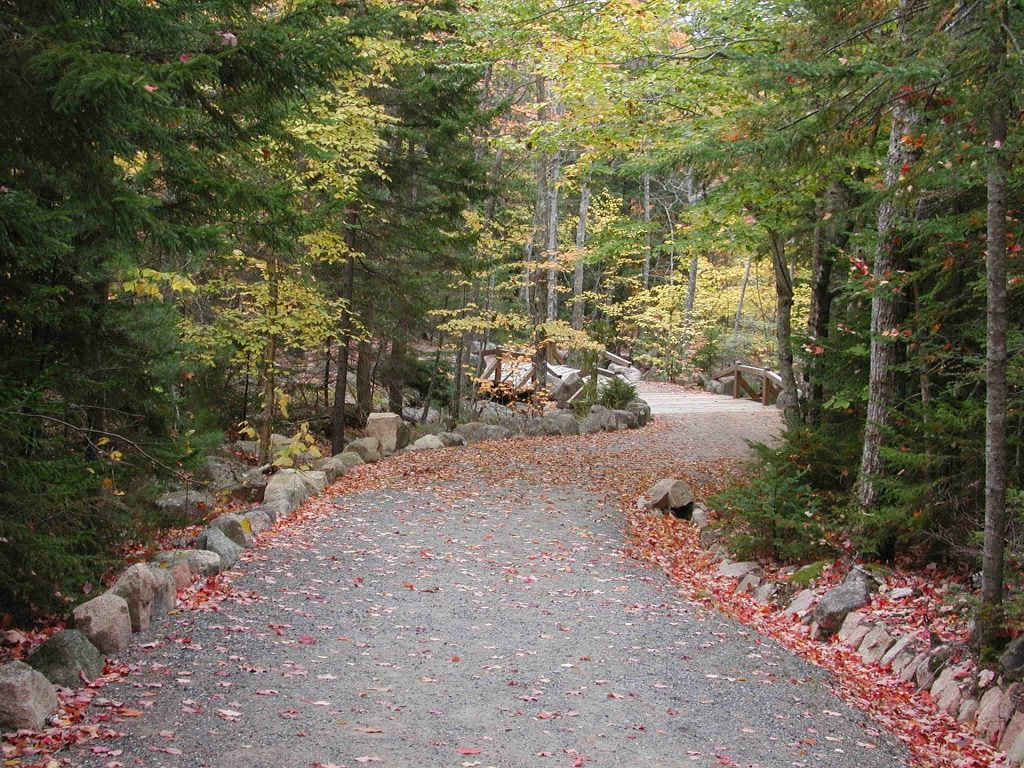
Acadia National Park, located in the picturesque state of Maine, is a haven for nature enthusiasts and outdoor adventurers.
Spanning over 49,000 acres, this national treasure boasts a diverse landscape of woodlands, rocky beaches, and glacier-scoured granite peaks, such as the famed Cadillac Mountain – the tallest mountain on the U.S. Atlantic coast.
One of the park’s primary attractions is its extensive hiking options. With over 120 miles of trails, hikers of all skill levels can find a path that suits their abilities and interests. From the challenging Precipice Trail, which offers panoramic views atop sheer cliffs, to the more leisurely Jordan Pond Path, there’s a trail for everyone.
The park’s carriage roads, built by John D. Rockefeller Jr., also provide 45 miles of scenic, vehicle-free routes for walking, biking, and horseback riding.
Camping in Acadia is a dream come true for many. The park offers several campgrounds, including the popular Blackwoods and Seawall, where visitors can immerse themselves in nature, gazing at starlit skies and listening to the soothing sounds of the forest.
Visitors are particularly enamored with the park’s breathtaking sunrises and sunsets, especially from the vantage point of Cadillac Mountain, where one can be among the first in the U.S. to witness the sunrise.
The blend of sea and mountain, the melding of rocky shores with dense forests, and the ever-changing play of light and shadow make Acadia National Park a beloved destination, offering a serene escape and a deep connection to the natural world.
9. Grand Teton National Park, Wyoming
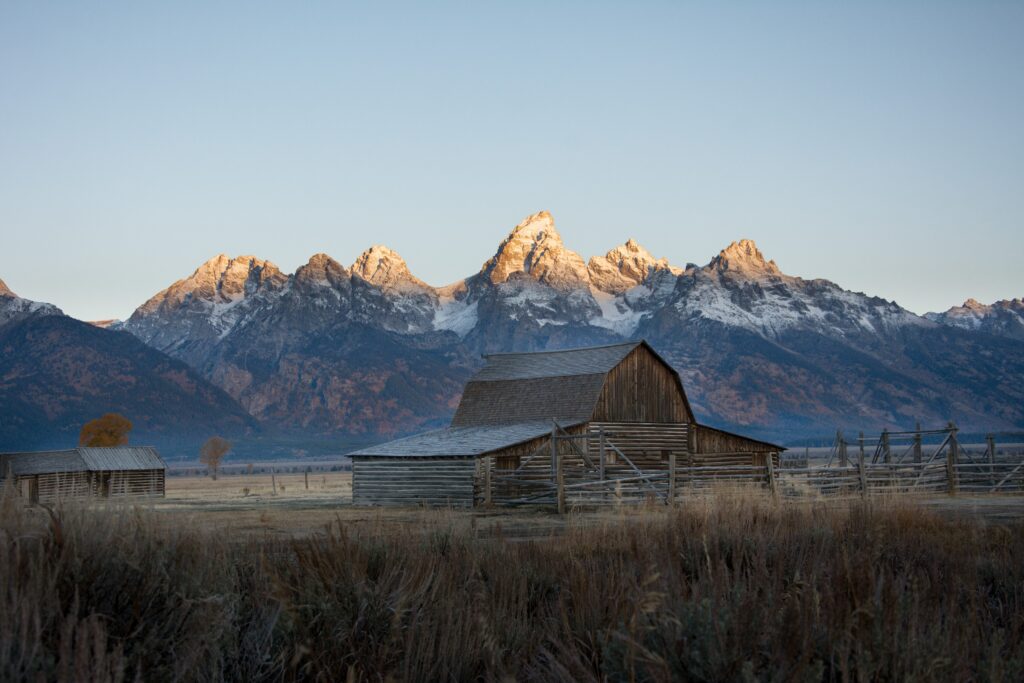
Grand Teton National Park, located in Wyoming, is a breathtaking testament to nature’s grandeur. Covering a vast expanse of over 310,000 acres, the park is renowned for its iconic Teton Range, a jagged mountain skyline that rises dramatically from the valley floor.
The park’s pristine alpine landscape, dotted with sparkling glacial lakes and lush meadows, offers a serene backdrop that captivates the hearts of nature enthusiasts and photographers alike.
For those with a penchant for adventure, Grand Teton National Park provides a plethora of hiking options. From gentle trails like Jenny Lake Loop to the challenging ascent of the Teton Crest Trail, there’s a path for every skill level.
Each trail offers a unique perspective of the park’s diverse ecosystem, be it through dense forests, past cascading waterfalls, or atop rugged mountain peaks.
Camping in the park is an experience in itself. With several campgrounds to choose from, visitors can immerse themselves in the wilderness, gazing at the star-studded sky or waking up to the melodious chirping of birds. The park’s remote nature ensures a genuine escape from the hustle and bustle of daily life.
Visitors are particularly enamored by the park’s tranquil ambiance and its raw, untouched beauty. The opportunity to spot diverse wildlife, from moose to bald eagles, adds to the allure. Grand Teton National Park is not just a destination; it’s an experience, a place where nature’s majesty is palpable and memories forged are indelible.
10. Glacier National Park, Montana
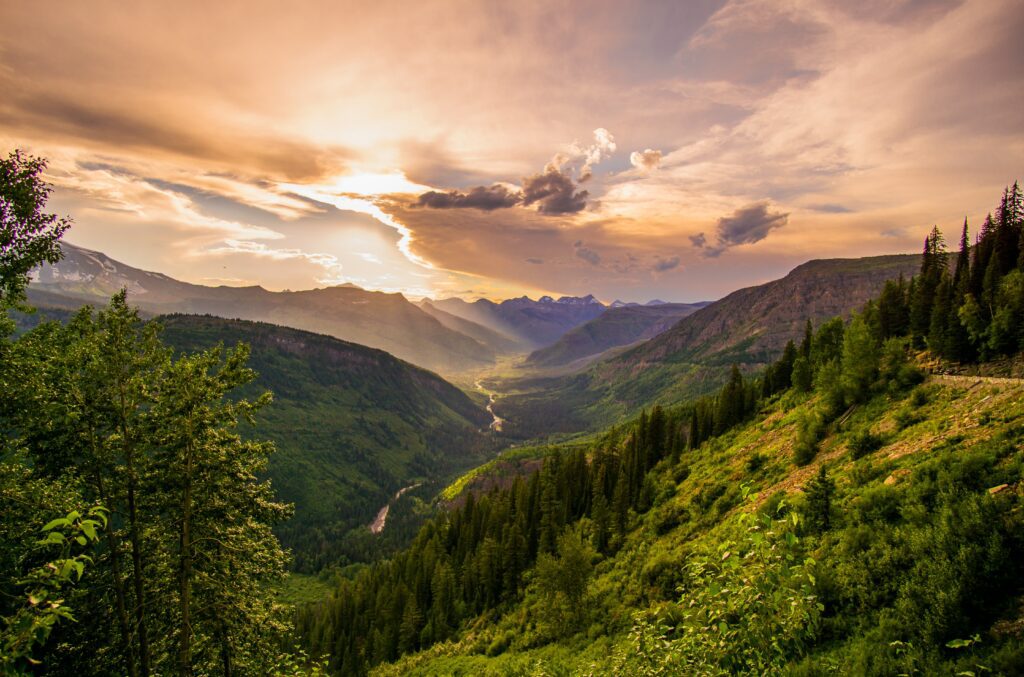
Glacier National Park, located in Montana, is a breathtaking testament to nature’s grandeur and the pristine beauty of the American wilderness. Spanning over a million acres, the park is a haven for outdoor enthusiasts and nature lovers alike.
One of its standout features is the vast array of hiking options it offers. From the challenging Grinnell Glacier Trail to the serene Trail of the Cedars, there’s a trail for every skill level, each offering a unique perspective of the park’s diverse landscape.
Camping in Glacier National Park is an experience in itself. The park boasts 13 campgrounds with over 1,000 campsites, allowing visitors to immerse themselves in the heart of nature.
Whether you’re pitching a tent under a canopy of stars at the Many Glacier Campground or parking your RV amidst the towering pines of Apgar Village, the park offers a range of camping experiences that cater to all preferences.
Visitors are often enamored by the park’s stunning glacial landscapes, verdant forests, and pristine lakes. The iconic Going-to-the-Sun Road, a scenic drive that cuts through the park, offers panoramic views that leave an indelible mark on one’s memory.
The diverse wildlife, including grizzly bears, mountain goats, and moose, adds to the park’s allure. But beyond its physical beauty, many visitors cherish the sense of tranquility and rejuvenation that Glacier National Park imparts, making it not just a destination, but an experience that resonates deeply with the soul.
11. Joshua Tree National Park, California
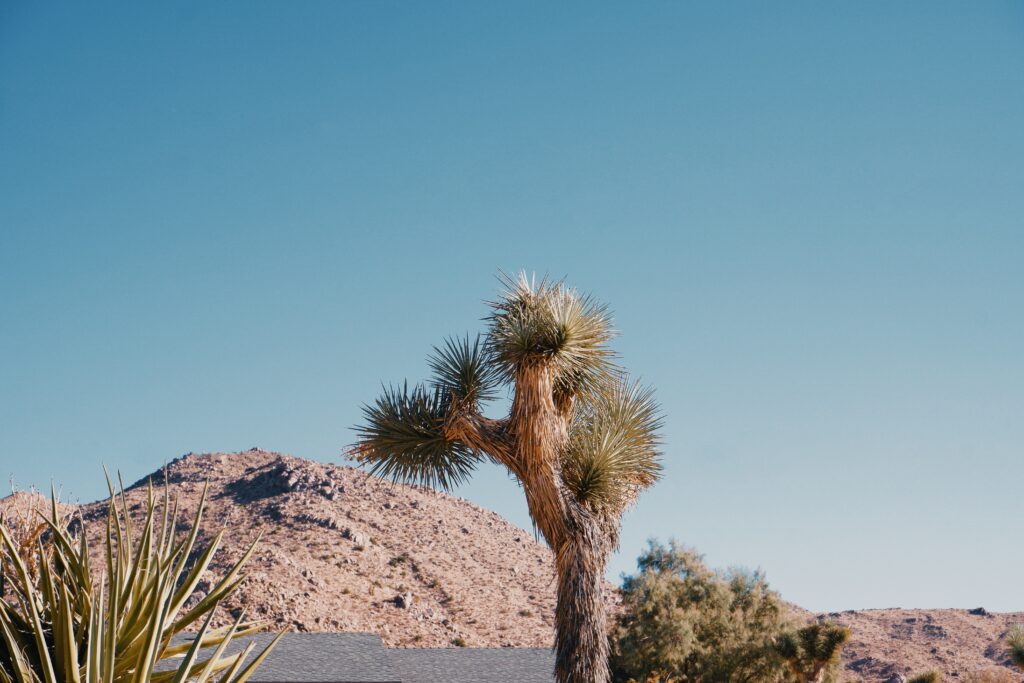
Joshua Tree National Park, located in California, is a mesmerizing fusion of two distinct desert ecosystems: the Mojave and the Colorado.
Renowned for its iconic Joshua Trees, the park is a haven for nature enthusiasts, photographers, and stargazers alike. The unique landscape, characterized by rugged rock formations and stark desert landscapes, offers a serene backdrop that captivates the soul.
Hiking in Joshua Tree is a transformative experience. With over 300 miles of hiking trails, ranging from easy walks to challenging treks, there’s something for everyone. Popular trails like Hidden Valley, Barker Dam, and Ryan Mountain offer breathtaking vistas and a chance to immerse oneself in the park’s natural beauty.
For those seeking a more challenging adventure, the 35-mile California Riding and Hiking Trail promises a memorable journey through the heart of the park.
Camping in Joshua Tree is equally enchanting. The park boasts nine campgrounds, with sites that cater to both tent campers and RV enthusiasts. Whether you choose to camp under the vast starry skies at Jumbo Rocks or amidst the stunning rock formations at White Tank, the experience is bound to be unforgettable.
Visitors are particularly enamored by the park’s surreal landscapes, especially during golden hour when the setting sun casts a warm glow over the terrain.
The clear desert skies also make Joshua Tree one of the best places for stargazing, with many visitors reporting awe-inspiring views of the Milky Way. The harmonious blend of natural beauty, adventure, and tranquility is what makes Joshua Tree National Park a beloved destination for many.
12. Cuyahoga Valley National Park, Ohio
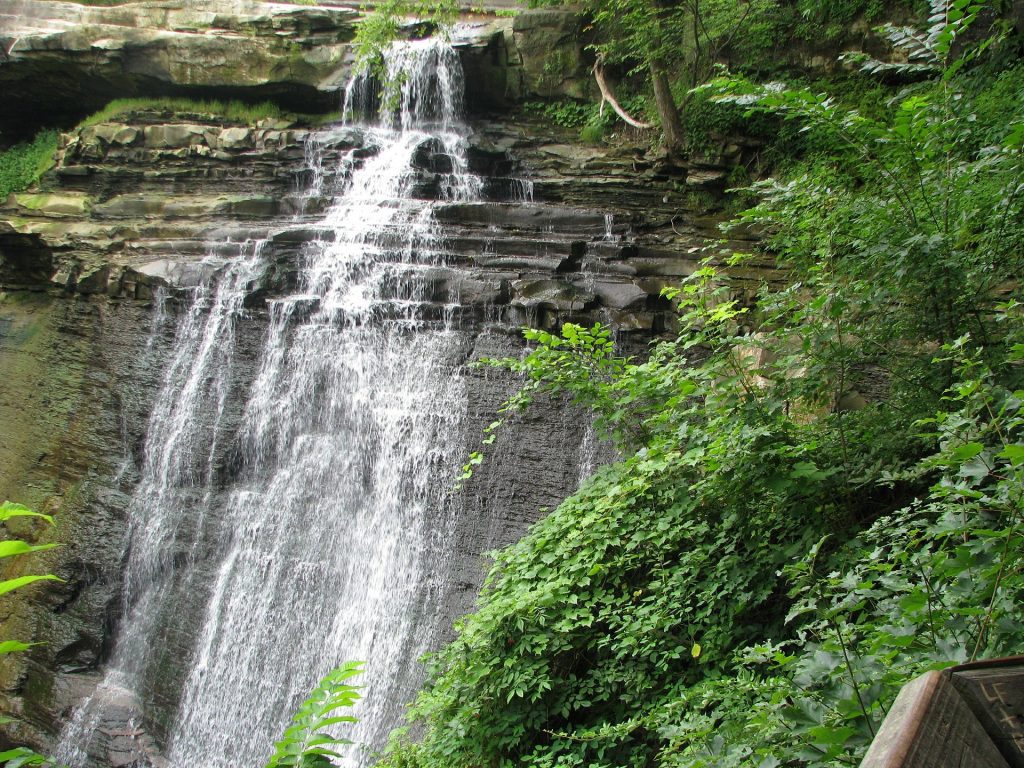
Cuyahoga Valley National Park, located in Ohio, is a testament to nature’s resilience and beauty.
Spanning over 33,000 acres, this national treasure offers a refreshing escape from the urban hustle, seamlessly blending historical sites with natural wonders. One of the park’s standout features is the Cuyahoga River, which meanders gracefully through deep forests, rolling hills, and open farmlands.
For outdoor enthusiasts, the park presents a plethora of hiking options. With over 125 miles of trails, hikers can choose from scenic routes like the Towpath Trail, which follows the historic Ohio & Erie Canal, or the challenging Ledges Trail, which offers panoramic views from its cliff-top vantage points.
Each trail provides a unique perspective of the park’s diverse ecosystems, from wetlands and waterfalls to dense hardwood forests.
Camping in Cuyahoga Valley is a memorable experience. While the park itself doesn’t have traditional drive-up campgrounds, the nearby Stanford House offers a more refined camping experience with furnished rooms and amenities.
For a more rustic experience, several backcountry sites are available, allowing campers to immerse themselves in nature.
Visitors are particularly enamored by the park’s rich biodiversity. Birdwatchers can spot over 200 bird species, while the autumn months transform the valley into a riot of colors, making it a photographer’s paradise.
The park’s commitment to preserving both its natural and cultural heritage, combined with its recreational offerings, makes Cuyahoga Valley National Park a beloved destination for many.
13. Bryce Canyon National Park, Utah
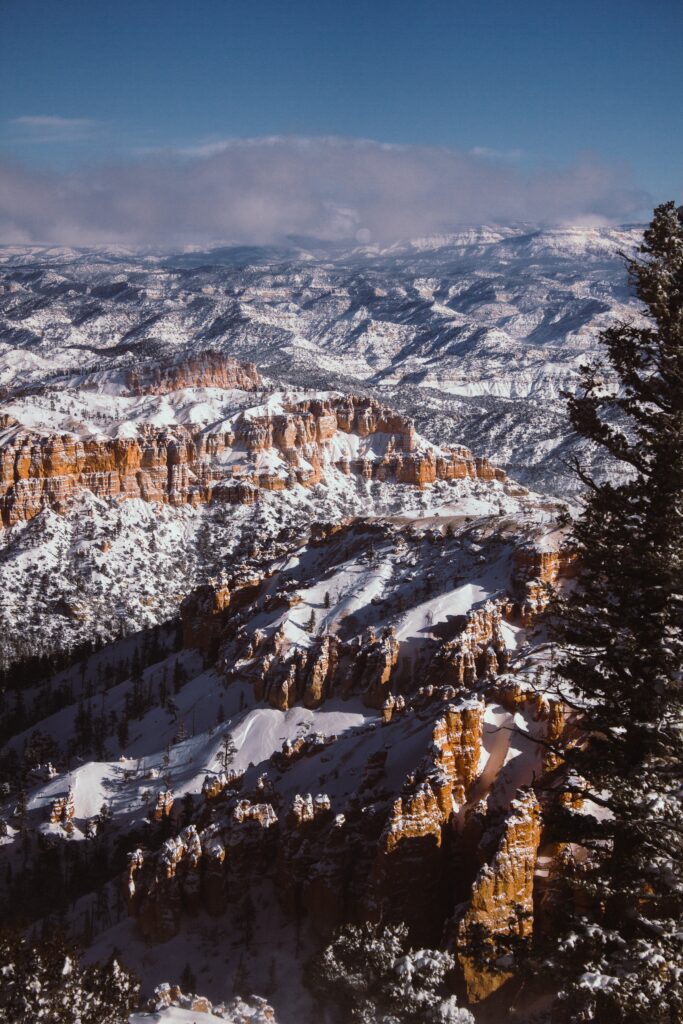
Bryce Canyon National Park, located in Utah, is a mesmerizing testament to nature’s artistry. Renowned for its unique geology, the park boasts a series of horseshoe-shaped amphitheaters carved from the eastern edge of the Paunsaugunt Plateau.
The park’s distinctive features are its hoodoos, tall and thin spires of rock that protrude from the bottom of arid basins. These vibrant formations, painted in shades of red, orange, and white, create a surreal and breathtaking landscape that captivates visitors.
For those seeking adventure, Bryce Canyon offers a plethora of hiking options, ranging from easy strolls like the Mossy Cave Trail to challenging hikes like the Fairyland Loop.
Each trail provides a unique perspective of the park’s stunning geology and panoramic vistas. Camping enthusiasts will find two campgrounds within the park, North and Sunset, which provide a perfect base to stargaze in one of the last pristine dark skies of the United States.
Visitors are particularly enamored by the park’s serene beauty during sunrise and sunset, when the hoodoos glow in a soft, ethereal light. The combination of its unique geological wonders, diverse hiking trails, and pristine camping options make Bryce Canyon National Park a beloved destination for nature lovers and adventure seekers alike.
14. Hawaii Volcanoes National Park, Hawaii

Hawaii Volcanoes National Park, located on the Big Island of Hawaii, is a testament to nature’s raw power and captivating beauty.
The park is home to two of the world’s most active volcanoes, Kīlauea and Mauna Loa, offering visitors a rare opportunity to witness the birth of new land as molten lava flows into the ocean.
The diverse landscape ranges from tropical rainforests to barren lunar-like terrains, providing a unique backdrop for hiking and camping adventures. There are over 150 miles of hiking trails that cater to all levels of expertise, from the easy Crater Rim Trail with panoramic views of the caldera to the challenging Mauna Loa Summit Trail.
For camping enthusiasts, the park offers both drive-in campgrounds and backcountry camping sites, allowing visitors to immerse themselves in the wilderness and experience the park under the starlit sky.
What visitors particularly love about Hawaii Volcanoes National Park is the blend of cultural significance and natural wonders.
The park not only showcases the dynamic processes of volcanism but also delves into the rich Hawaiian culture and traditions, making it a holistic experience of learning, adventure, and awe.
15. Arches National Park, Utah
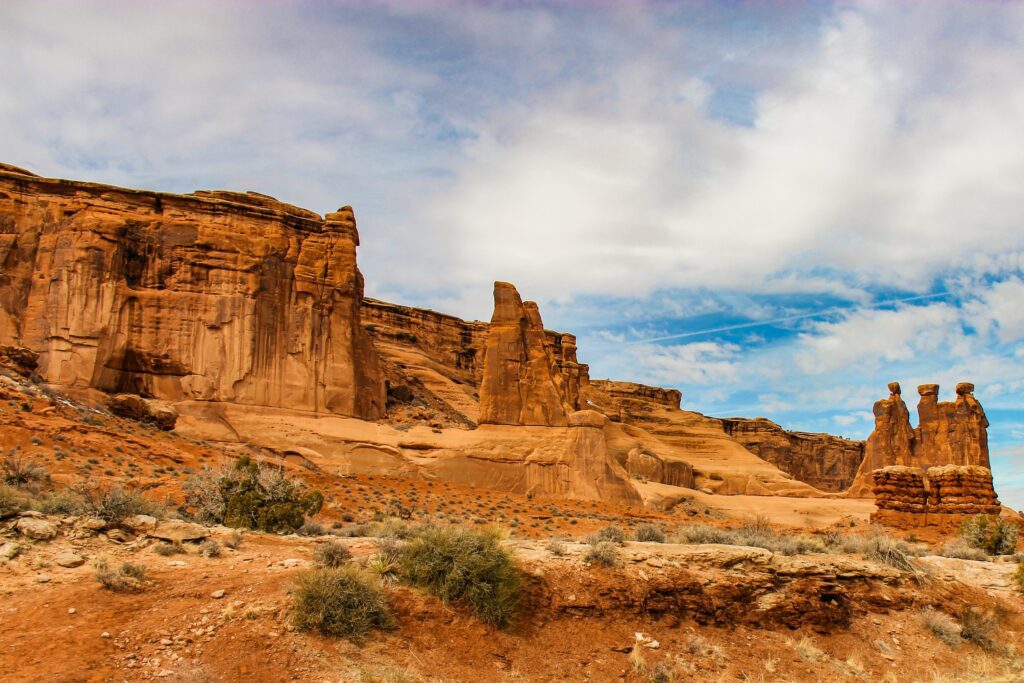
Arches National Park, located in Utah, is a mesmerizing testament to nature’s artistry, boasting over 2,000 natural stone arches, along with a myriad of pinnacles, giant fins, and balanced rocks.
The park’s unique red rock landscape is a result of millions of years of erosion, and it offers a visual spectacle that is unparalleled.
For those who love the outdoors, Arches provides a plethora of hiking options, ranging from easy trails like the Landscape Arch to the more challenging Primitive Trail.
Each trail offers a unique perspective of the park’s stunning geology.
Camping enthusiasts can set up at the Devils Garden Campground, which provides an immersive experience of the park’s beauty, especially under a starlit sky.
Visitors are often enamored by the park’s surreal landscapes, especially during sunrise and sunset when the rocks glow in fiery hues.
he combination of its distinctive geological formations, diverse hiking trails, and serene camping spots makes Arches National Park a beloved destination for nature lovers and adventure seekers alike.
16. Hot Springs National Park, Arkansas
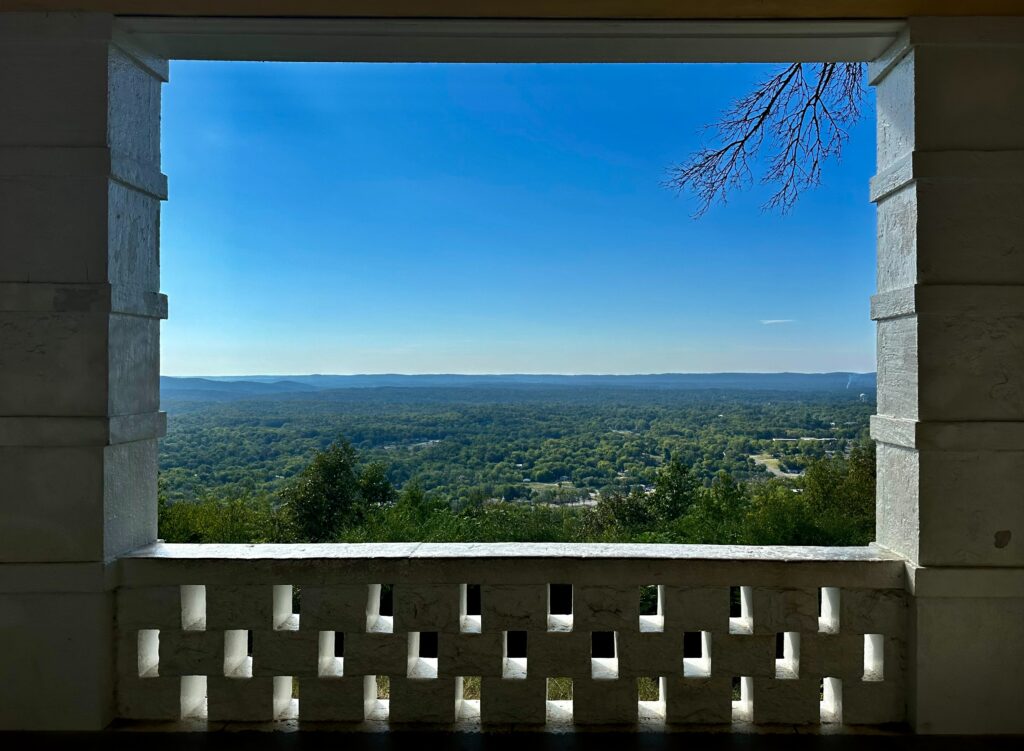
Nestled in the heart of Arkansas, Hot Springs National Park is a haven for nature enthusiasts. This unique park boasts thermal waters that have drawn visitors for centuries, offering therapeutic benefits and a touch of nature’s magic.
Hiking aficionados are in for a treat with over 26 miles of picturesque trails. Ranging from easy to challenging, these trails meander through lush forests, leading to panoramic vistas and serene spots. The Sunset Trail, the park’s longest, offers a diverse landscape, from dense woodlands to rocky outcrops.
Camping in the park is an immersive experience. While there are no campgrounds within the park itself, the nearby Gulpha Gorge Campground provides a perfect base for adventurers. With the babbling Gulpha Creek as a backdrop, campers can enjoy a peaceful night under the stars.
Visitors are often enamored by the park’s harmonious blend of history and nature. The historic Bathhouse Row, with its elegant architecture, stands as a testament to the park’s rich past.
The soothing hot springs, vibrant flora, and abundant wildlife make it a cherished destination, offering a rejuvenating escape from the hustle and bustle of daily life.
17. Shenandoah National Park, Virginia
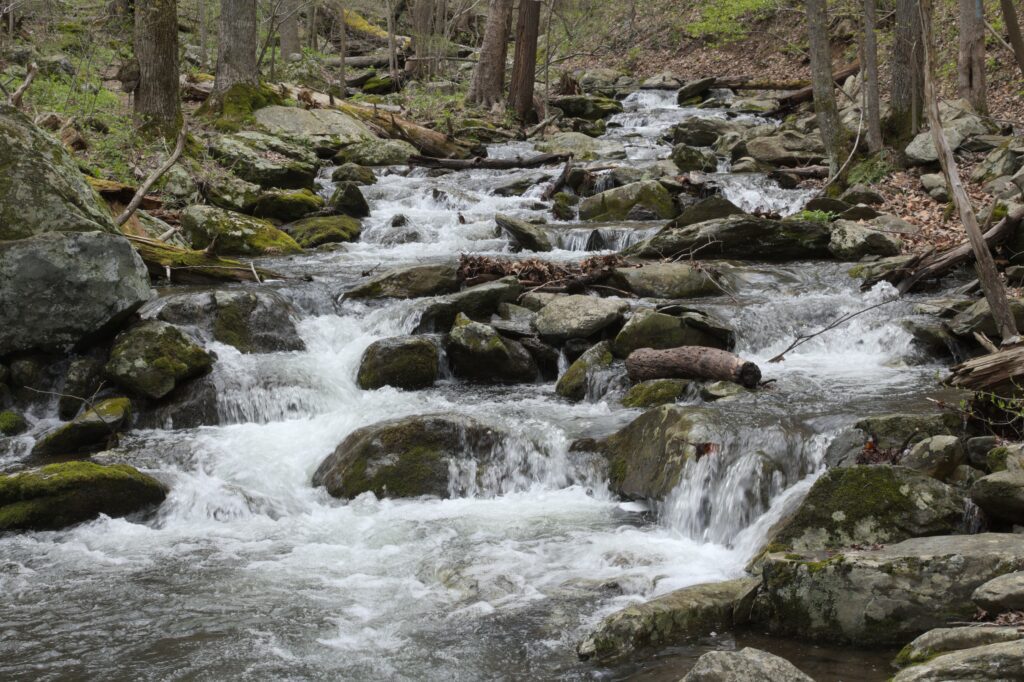
Nestled in the heart of Virginia, Shenandoah National Park is a testament to nature’s grandeur. The park boasts over 200,000 acres of pristine wilderness, making it a haven for those seeking a respite from the hustle and bustle of city life.
Hiking enthusiasts are in for a treat with over 500 miles of trails, ranging from easy walks to challenging treks. The famous Skyline Drive offers breathtaking panoramic views, especially during the fall when the foliage turns into a riot of colors.
For those who prefer to immerse themselves in the wild, camping options abound. From backcountry camping for the adventurous souls to well-equipped campgrounds for families, there’s something for everyone.
Visitors often rave about the park’s diverse wildlife. It’s not uncommon to spot deer, black bears, and a myriad of bird species. The serene waterfalls and quiet woodlands offer a therapeutic escape, making it a favorite destination for relaxation and reflection.
In essence, Shenandoah National Park is not just a place, but an experience. One that leaves visitors rejuvenated, with memories that last a lifetime.
18. Mount Rainier National Park, Washington

Mount Rainier National Park in Washington is a breathtaking haven for nature enthusiasts. Boasting the iconic Mount Rainier, the park’s landscape is a mesmerizing blend of subalpine meadows, ancient forests, and cascading waterfalls.
Hiking Options: The park offers over 260 miles of maintained trails. Whether you’re a novice or an experienced hiker, there’s a trail for everyone. Popular routes like the Skyline Trail provide panoramic views of the mountain and its wildflower meadows.
Camping Options: For those wishing to immerse themselves in the park’s beauty overnight, there are several campgrounds available. The Cougar Rock and Ohanapecosh campgrounds are favorites among visitors, offering a serene setting amidst the tall trees.
Visitor Favorites: Visitors are often enamored by the park’s diverse wildlife, from black bears to marmots. The sight of Mount Rainier reflecting in Tipsoo Lake at sunset is a memory many cherish. The park’s tranquility, combined with its awe-inspiring vistas, makes it a beloved destination for many.
19. Death Valley National Park, Nevada & California
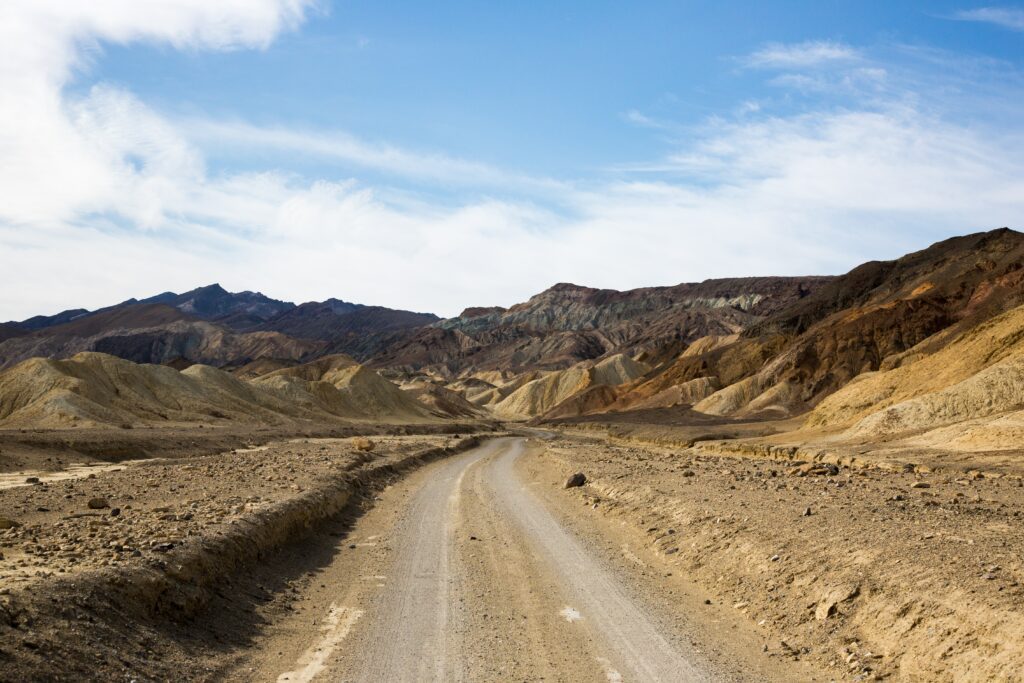
Death Valley National Park is a mesmerizing blend of extremes. Spanning across Nevada and California, it boasts the title of the hottest, driest, and lowest national park in the U.S. Its vast landscapes are a testament to nature’s raw beauty, with its sand dunes, salt flats, and colorful badlands.
Hiking Options: For the adventurous soul, Death Valley offers a plethora of hiking trails. From the easy and accessible Golden Canyon to the challenging Telescope Peak, there’s a trail for every level of hiker. The park’s diverse terrain ensures that every hike provides a unique experience, be it amidst the mesmerizing dunes or the rugged mountain terrains.
Camping Adventures: Camping in Death Valley is an experience like no other. With nine campgrounds to choose from, visitors can sleep under a blanket of countless stars, unhindered by city lights. The Furnace Creek Campground is particularly popular, offering amenities and close proximity to some of the park’s main attractions.
Visitor Favorites: Visitors are often captivated by the park’s surreal landscapes, especially the mesmerizing sunrise at Zabriskie Point and the mysterious sliding rocks at Racetrack Playa. The sense of solitude and vastness, combined with the park’s unique natural wonders, makes Death Valley a beloved destination for many.
20. Haleakalā National Park, Hawaii
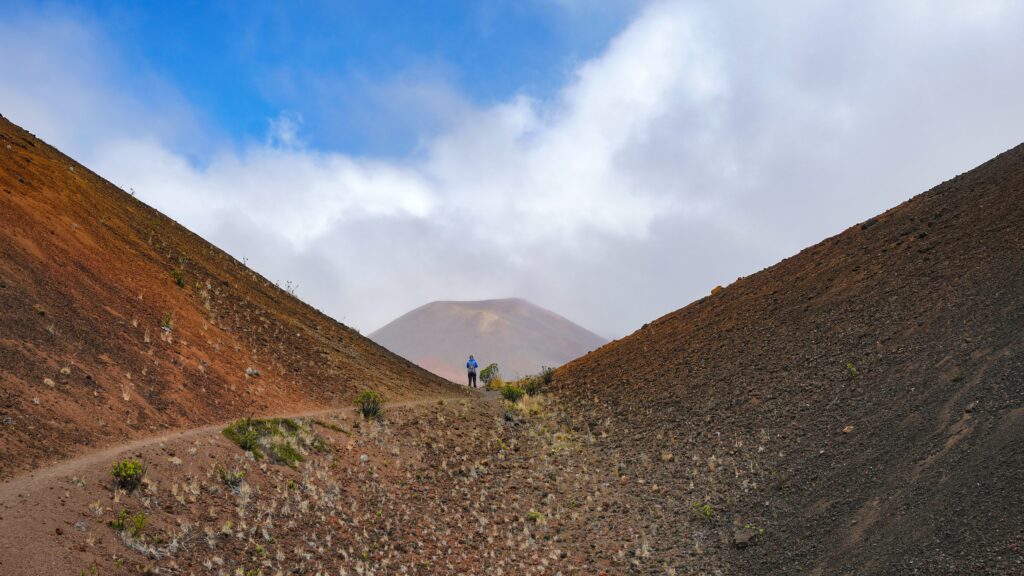
Haleakalā National Park, located in the picturesque Hawaiian Islands, is a haven for nature enthusiasts. The park is renowned for its breathtaking sunrise views from the Haleakalā Crater, often described as a spiritual experience by many who witness it.
Hiking options are abundant, catering to both novices and seasoned trekkers. Trails like the Sliding Sands and Hosmer Grove offer diverse terrains, from volcanic landscapes to lush forests, ensuring a unique experience with every step.
Camping enthusiasts aren’t left out either. The park provides two main campgrounds: Hosmer Grove and Kīpahulu. Both sites offer a genuine wilderness experience, with Kīpahulu being particularly popular for its proximity to the ocean.
Visitors are often enamored by the park’s rich biodiversity. From the native Hawaiian songbirds to the rare silversword plants, the park is a living showcase of unique species. The blend of cultural significance, with its ancient Hawaiian temples, and natural beauty makes Haleakalā a beloved destination.
In essence, Haleakalā National Park is not just a place to visit; it’s an experience, a journey through nature’s wonders, deeply cherished by all who set foot in it.
21. Sequoia National Park, California
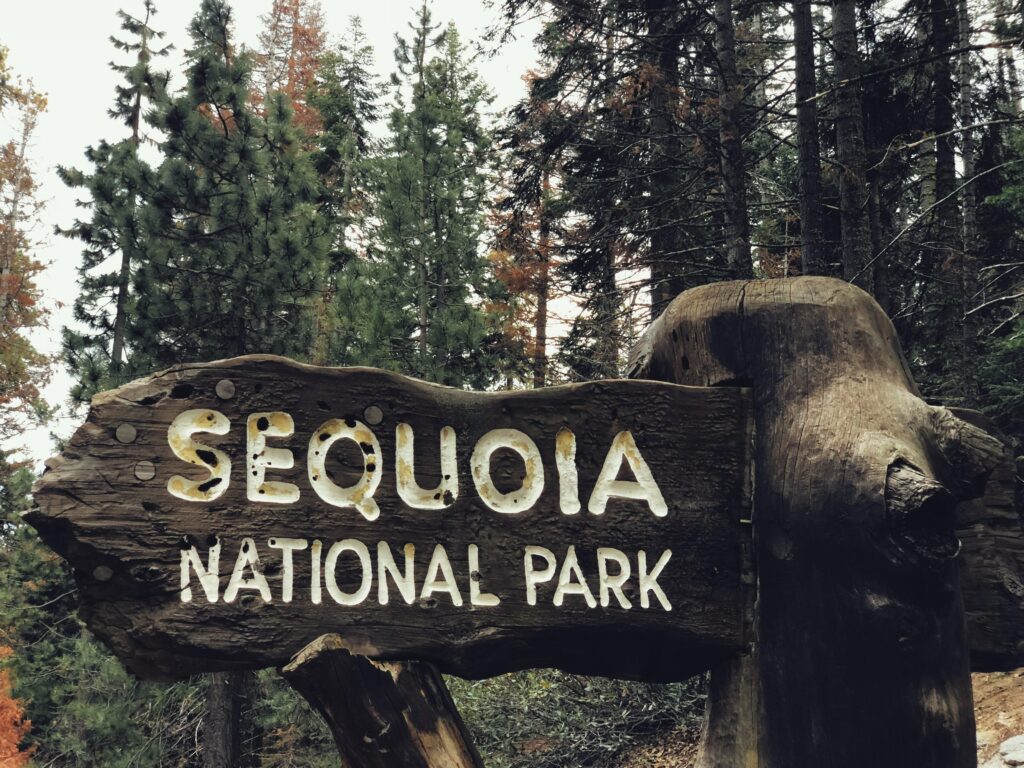
Nestled in the heart of California, Sequoia National Park is a testament to nature’s grandeur. The park is renowned for its colossal sequoia trees, including the General Sherman Tree, the largest living tree on Earth. These ancient giants, with their immense trunks and towering canopies, create a forest cathedral that leaves visitors in awe.
Hiking enthusiasts are spoiled for choice. The park boasts over 800 miles of trails, ranging from easy walks to challenging hikes. The Congress Trail and Moro Rock are among the favorites, offering panoramic views of the Sierra Nevada Mountains.
Camping in Sequoia is an experience unto itself. Amidst the serene backdrop, campgrounds like Lodgepole and Dorst Creek provide a perfect base for star-gazing, campfire stories, and immersing oneself in the wilderness.
Visitors often rave about the park’s pristine beauty and tranquility. The blend of alpine landscapes, meadows, and caverns, combined with the rich biodiversity, makes it a haven for nature lovers. The park’s ability to transport one to an ancient, untouched world is what keeps adventurers returning year after year.
22. Capitol Reef National Park, Utah
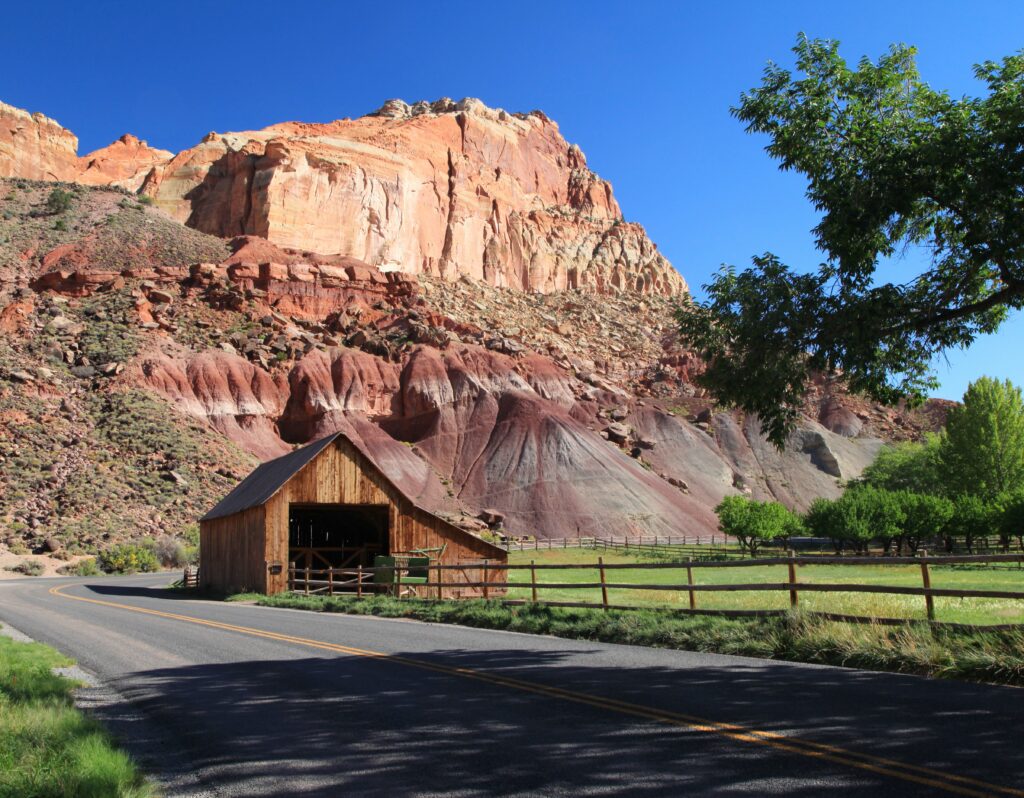
Nestled in the heart of Utah, Capitol Reef National Park stands as a testament to nature’s grandeur. Its unique geology, characterized by the Waterpocket Fold—a nearly 100-mile long warp in the Earth’s crust, offers a visual spectacle that’s unparalleled.
Hiking enthusiasts are in for a treat. The park boasts a diverse range of trails, from the easy Capitol Gorge to the challenging Golden Throne, each offering its own unique vista of the park’s stunning rock formations and canyons. For those seeking a multi-day adventure, the park’s backcountry routes provide the perfect setting.
Camping in Capitol Reef is an experience unto itself. Whether you’re pitching a tent under the vast starry skies at the Fruita Campground or opting for a more rugged backcountry campsite, the serenity of the desert landscape ensures a memorable stay.
Visitors are often enamored by the park’s rich history, which spans ancient petroglyphs from the Fremont culture to the historic orchards of Fruita. The combination of breathtaking landscapes, diverse recreational activities, and a touch of history makes Capitol Reef a beloved destination for many.
24. Saguaro National Park, Arizona
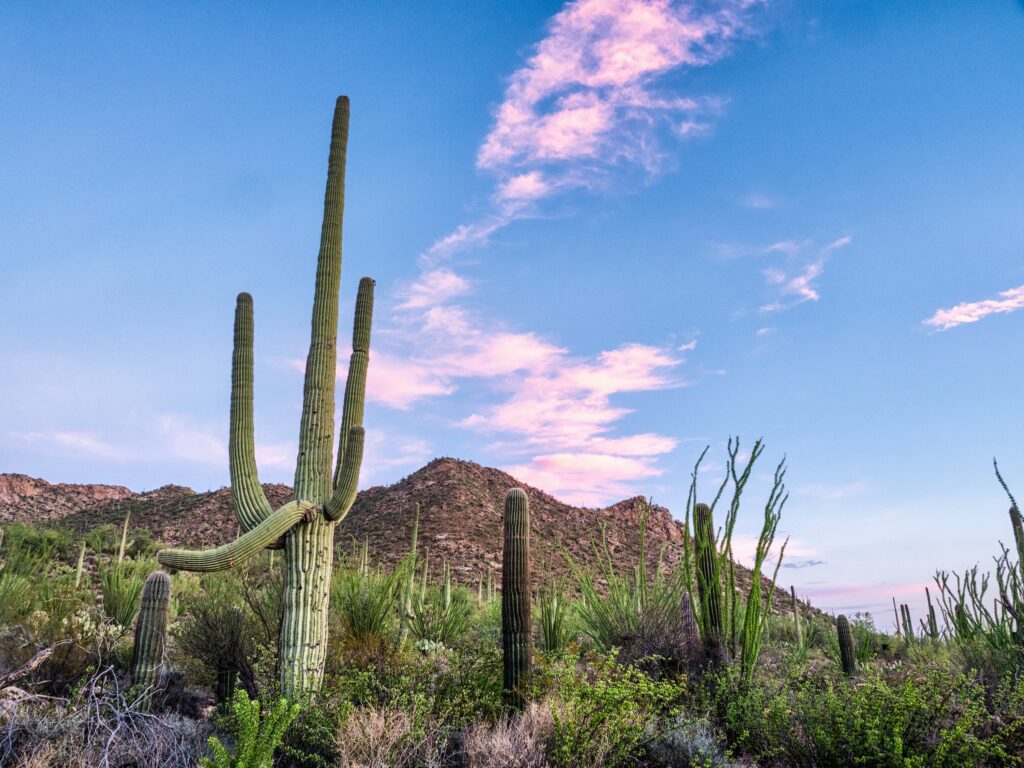
Saguaro National Park, located in Arizona, is a testament to the beauty of the Sonoran Desert. The park is named after the iconic Saguaro cactus, which stands tall against the azure skies, creating a mesmerizing landscape that captivates visitors.
Hiking enthusiasts are in for a treat, with over 165 miles of trails that range from easy walks to challenging hikes. Each trail offers a unique perspective of the desert ecosystem, from the towering cacti to the diverse wildlife.
For those who prefer to immerse themselves in nature, camping options are available. The park’s campgrounds provide a serene setting under starlit skies, making it a perfect spot for both seasoned campers and first-timers.
Visitors often rave about the breathtaking sunsets that paint the sky in hues of orange and purple. The tranquility of the desert, combined with the rich cultural history of the area, makes Saguaro National Park a must-visit destination.
Whether it’s the allure of the majestic cacti or the call of the wild, there’s something in this park that resonates with everyone.
25. Canyonlands National Park, Utah
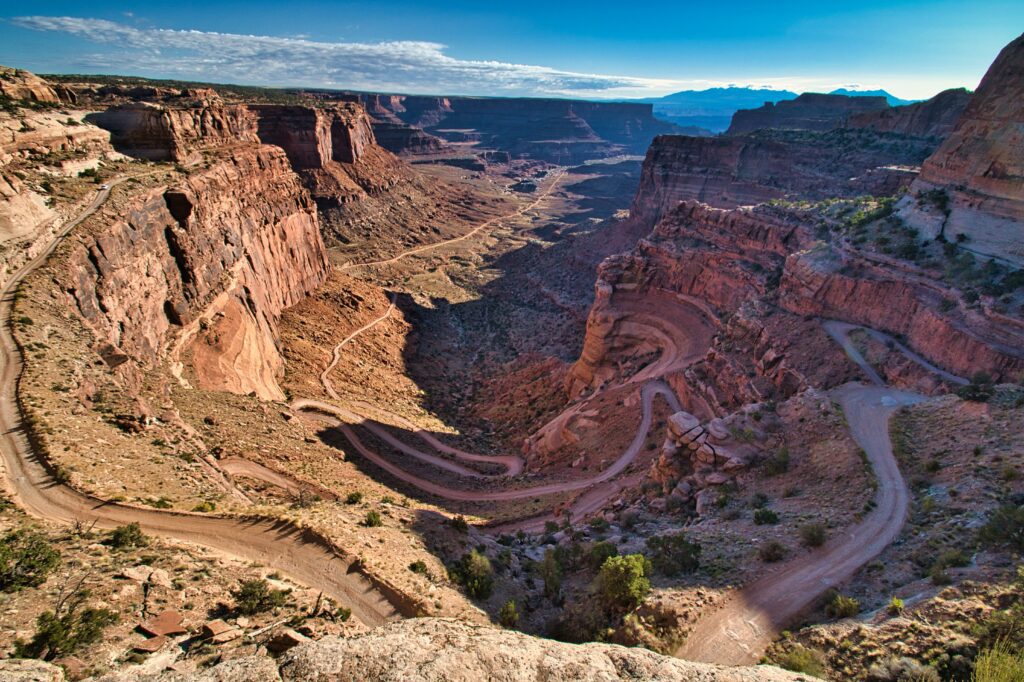
Canyonlands National Park, located in Utah, is a breathtaking expanse of unique geological formations and vast landscapes.
The park boasts a rich tapestry of canyons, mesas, and arches, carved out by the Colorado River over millions of years. The vibrant hues of red rock against the azure sky create a mesmerizing visual spectacle.
Hiking enthusiasts find Canyonlands to be a paradise. With a plethora of trails ranging from easy walks to challenging treks, there’s something for everyone. The iconic Mesa Arch and the White Rim Trail are among the favorites, offering panoramic views that leave hikers in awe.
For those who prefer an immersive experience, camping options abound. Whether it’s backcountry camping under a canopy of stars or at established campgrounds with amenities, the park caters to all types of adventurers.
Visitors often rave about the profound sense of tranquility and vastness they feel in Canyonlands. The sheer scale and beauty of the landscapes, combined with the opportunity to disconnect and be one with nature, make it a beloved destination for many.
The park’s untouched beauty and the symphony of colors at sunset are experiences that remain etched in the hearts of those who visit.
26. Crater Lake National Park, Oregon
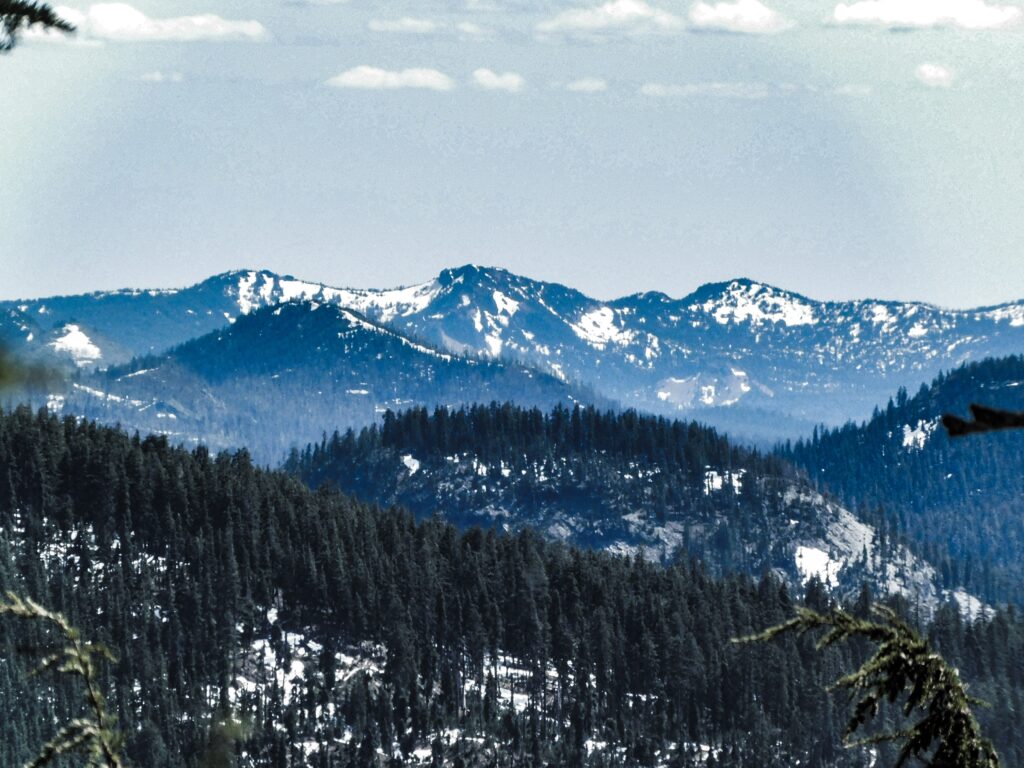
Crater Lake National Park, nestled in the heart of Oregon, is a testament to nature’s grandeur. The park’s centerpiece, Crater Lake, is renowned for its deep blue hue and crystal-clear waters, formed from the remnants of an ancient volcano. This pristine lake is the deepest in the U.S., making it a unique natural wonder.
Hiking enthusiasts are spoilt for choice with over 90 miles of trails, ranging from leisurely walks to challenging hikes. The “Watchman Peak Trail” offers panoramic views of the lake, while the “Cleetwood Cove Trail” provides the only legal access to the lake’s shore.
Camping options abound, with two main campgrounds: Mazama and Lost Creek. Both offer a rustic experience, with Mazama being the larger of the two, accommodating tents, RVs, and trailers.
Visitors are often captivated by the park’s serene ambiance and breathtaking vistas. The opportunity to gaze at the starlit sky, free from light pollution, is a highlight for many. The combination of its natural beauty, diverse recreational activities, and the sense of tranquility it offers makes Crater Lake National Park a beloved destination for many.
27. Theodore Roosevelt National Park, North Dakota
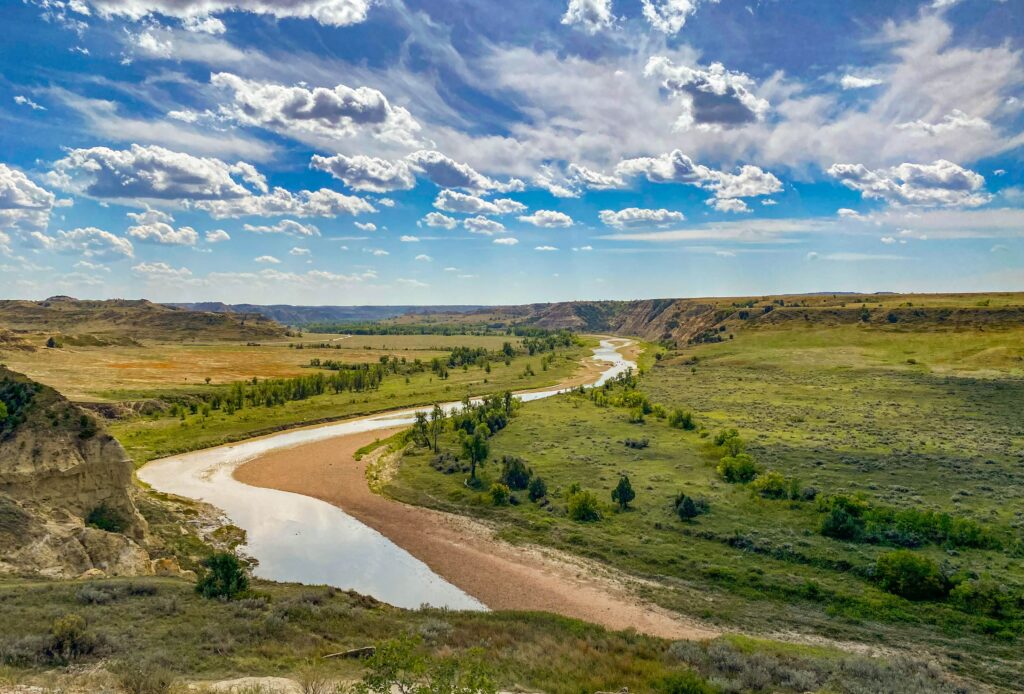
Theodore Roosevelt National Park, nestled in the rugged badlands of North Dakota, stands as a testament to the untamed beauty of the American wilderness. Its vast landscapes, ranging from rolling prairies to intricate rock formations, offer a visual treat to nature enthusiasts.
Hiking aficionados are spoilt for choice with a plethora of trails that cater to both beginners and seasoned trekkers. The park’s diverse terrain ensures that every hike is a unique experience, be it the scenic Wind Canyon Trail or the challenging Petrified Forest Loop.
For those who prefer an immersive experience, camping options abound. Whether setting up a tent under the vast starry skies at the Cottonwood Campground or opting for backcountry camping amidst the park’s serene landscapes, there’s something for every kind of adventurer.
Visitors often rave about the park’s abundant wildlife. From wild horses grazing on the meadows to bison roaming freely, the chance to witness these majestic creatures in their natural habitat is truly unparalleled. The tranquility, combined with the raw beauty of the landscapes, makes Theodore Roosevelt National Park a beloved destination for many.
28. Petrified Forest National Park, Arizona
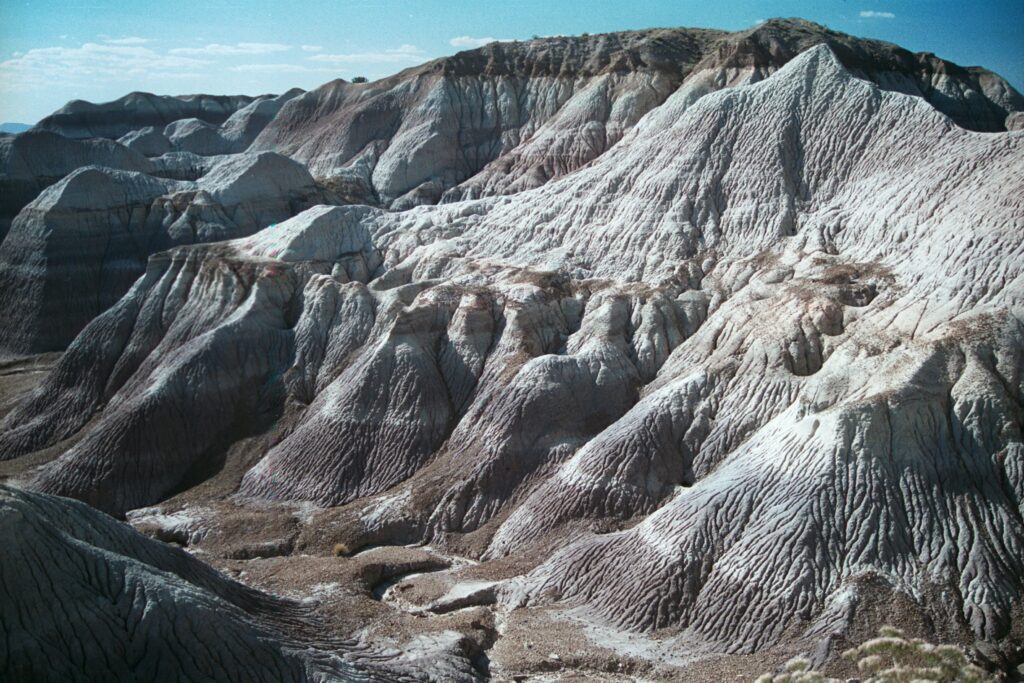
Petrified Forest National Park, located in Arizona, is a testament to the wonders of nature. The park boasts a vast landscape filled with colorful petrified wood, remnants of an ancient forest that existed millions of years ago. These fossilized logs shimmer with a myriad of hues, making it a photographer’s dream.
Hiking enthusiasts will find a plethora of trails that cater to all skill levels. From the short and accessible Giant Logs Trail to the more challenging Blue Mesa Trail, there’s something for everyone. Each path offers unique vistas of the park’s diverse geological formations.
Camping within the park is a unique experience. While there aren’t established campgrounds, backcountry camping is permitted. This allows adventurers to immerse themselves in the serene wilderness, under a canopy of stars, away from the hustle and bustle.
Visitors often rave about the surreal landscapes, where the past and present collide. The Painted Desert section, with its vibrant layers of rock, is a favorite among many.
The rich history, encompassing both ancient civilizations and Route 66, adds depth to the natural beauty. It’s a place where memories are made, and stories of nature’s grandeur are etched in stone.
29. Wind Cave National Park, South Dakota
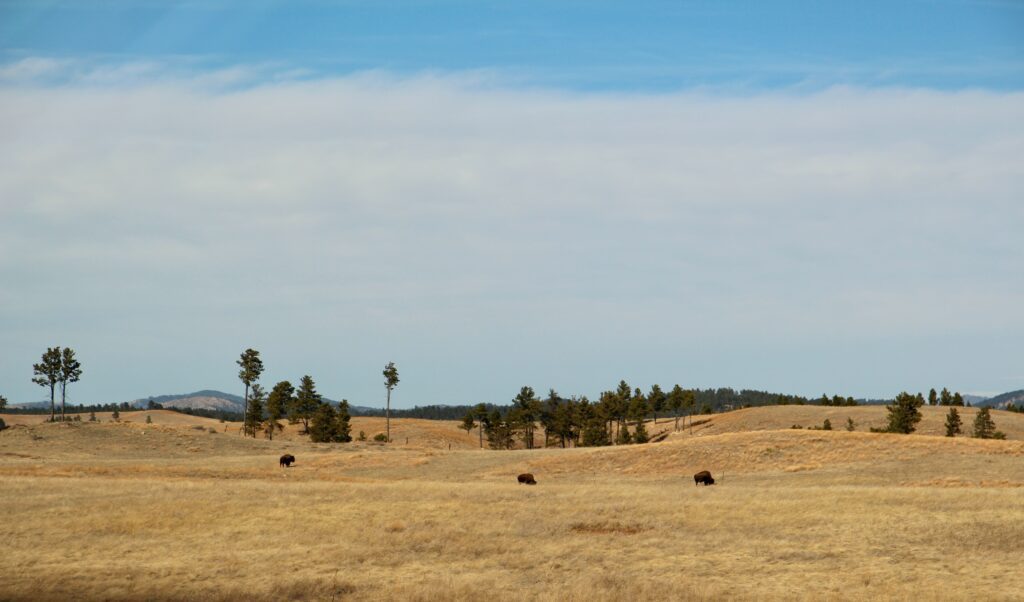
Wind Cave National Park, located in South Dakota, is a testament to nature’s wonders. One of its most notable features is the intricate cave system, boasting the world’s densest concentration of boxwork formations. These delicate honeycomb patterns etched into the cave walls are a sight to behold.
Hiking enthusiasts have a plethora of trails to choose from, ranging from easy walks to challenging treks. The park’s diverse landscape, from rolling prairies to dense forests, offers a unique hiking experience. Wildlife sightings, including bison and elk, add to the thrill.
Camping options are abundant. Whether you’re a seasoned camper looking for backcountry sites or a family seeking accessible campgrounds, Wind Cave caters to all. The starry nights, with minimal light pollution, make for memorable campfire moments.
Visitors often rave about the serene ambiance of the park. The harmonious blend of underground wonders and surface beauty provides a retreat from the hustle and bustle of daily life.
The rich history, encompassing Native American culture and early explorers, adds depth to the visitor experience. It’s no wonder that those who visit Wind Cave National Park leave with cherished memories.
30. Kings Canyon National Park, California

Kings Canyon National Park, nestled in California, is a breathtaking expanse of natural beauty. The park boasts a unique blend of towering cliffs, verdant valleys, and serene meadows, making it a haven for nature enthusiasts.
Hiking enthusiasts are spoilt for choice with a myriad of trails, ranging from easy walks to challenging treks. The famous Mist Falls Trail and the Rae Lakes Loop are just a couple of the many trails that offer panoramic views of the park’s diverse landscapes.
For those who prefer an immersive experience, camping options abound. Whether you’re pitching a tent under the canopy of giant sequoias or opting for a backcountry campsite, the park promises a memorable stay amidst nature.
Visitors often rave about the park’s untouched beauty and the sense of tranquility it offers. The mesmerizing sight of the deep Kings Canyon, often compared to the Grand Canyon, and the serene sounds of flowing rivers and rustling leaves make it a favorite among many.
In essence, Kings Canyon National Park is not just a destination; it’s an experience that resonates with the soul, leaving visitors yearning for more.
31. Denali National Park, Alaska
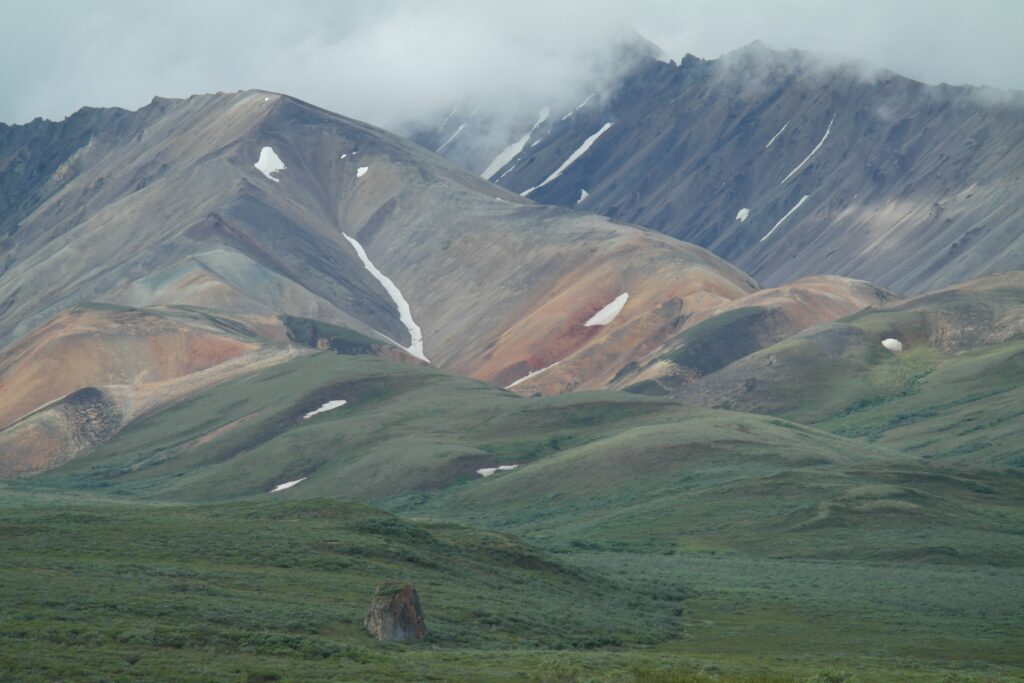
Denali National Park, located in Alaska, is a vast expanse of untouched wilderness that offers an unparalleled experience for nature enthusiasts. Covering over six million acres, the park is home to North America’s tallest peak, Mount Denali, which stands majestically at 20,310 feet.
For hikers, Denali presents a myriad of trails ranging from easy walks to challenging mountain treks. Unlike many national parks, Denali encourages off-trail hiking, allowing adventurers to forge their own path and connect deeply with the landscape.
Camping options are diverse, with both established campgrounds for families and backcountry sites for seasoned backpackers.
Visitors to Denali are often captivated by its diverse wildlife. Sightings of grizzly bears, moose, wolves, and caribou are not uncommon. The park’s pristine landscapes, from tundra plains to snowy peaks, offer breathtaking vistas at every turn.
Moreover, the Northern Lights frequently dance across the sky, providing a mesmerizing display that leaves an indelible mark on the hearts of those fortunate enough to witness it.
32. Mammoth Cave National Park, Kentucky
Mammoth Cave National Park, located in Kentucky, is renowned for its vast underground cave system, the longest in the world. This natural wonder boasts over 400 miles of explored passageways, drawing visitors from all corners of the globe.
The intricate formations, including stalactites, stalagmites, and flowstones, are a testament to nature’s artistry.
Hiking enthusiasts have a plethora of trails to choose from, ranging from easy walks to challenging treks. The park’s diverse terrain offers scenic vistas, dense forests, and river valleys, ensuring a memorable experience for every hiker.
Camping options are abundant, with both developed campgrounds and backcountry sites available. Whether you prefer a tent under the stars or an RV setup, the park caters to all camping styles.
Visitors often rave about the guided cave tours, which provide a deeper understanding of the cave’s history and geology. The serene ambiance, combined with the park’s rich biodiversity, makes it a haven for nature lovers.
The sense of adventure, coupled with the opportunity to disconnect and immerse oneself in nature, is what keeps visitors coming back year after year.
33. Mesa Verde National Park, Colorado

Mesa Verde National Park, located in Colorado, is a testament to the rich history and natural beauty of the region. This UNESCO World Heritage Site is renowned for its well-preserved Ancestral Puebloan cliff dwellings, offering visitors a unique glimpse into the lives of its ancient inhabitants.
Hiking enthusiasts are in for a treat, with trails that cater to all levels. From the easy Mesa Top Loop Road to the more challenging Petroglyph Point Trail, there’s something for everyone. Each path provides a distinct perspective of the park’s archaeological wonders and scenic landscapes.
Camping options abound, with the Morefield Campground being a popular choice. Nestled amidst wildflowers and wildlife, it provides an authentic outdoor experience. Campers can enjoy starry nights, serene mornings, and the sounds of nature.
Visitors often rave about the breathtaking sunsets, the educational ranger-led tours, and the profound sense of history that permeates the air. The combination of natural beauty, historical significance, and outdoor activities makes Mesa Verde a beloved destination for many.
34. Redwood National Park, California

Redwood National Park in California is a testament to nature’s grandeur. Home to the world’s tallest trees, the ancient redwoods, this park offers a unique blend of awe-inspiring landscapes and serene beauty.
Every corner of the park whispers tales of centuries gone by, as these majestic trees have stood tall for hundreds of years.
Hiking enthusiasts are in for a treat, with trails that meander through lush forests, alongside pristine streams, and offer panoramic views of the Pacific coastline. Whether you’re a novice or an experienced hiker, there’s a trail tailored for you.
Camping in Redwood National Park is an experience unto itself. Visitors can immerse themselves in nature, with campsites nestled amidst the towering redwoods. The sound of the forest at night, under a canopy of stars, is an unforgettable experience.
Visitors often rave about the tranquility and the sheer scale of the redwoods. The park offers a chance to disconnect from the hustle and bustle and reconnect with nature. Many leave with a renewed sense of wonder and a deep appreciation for the natural world.
35. Lassen Volcanic National Park, California
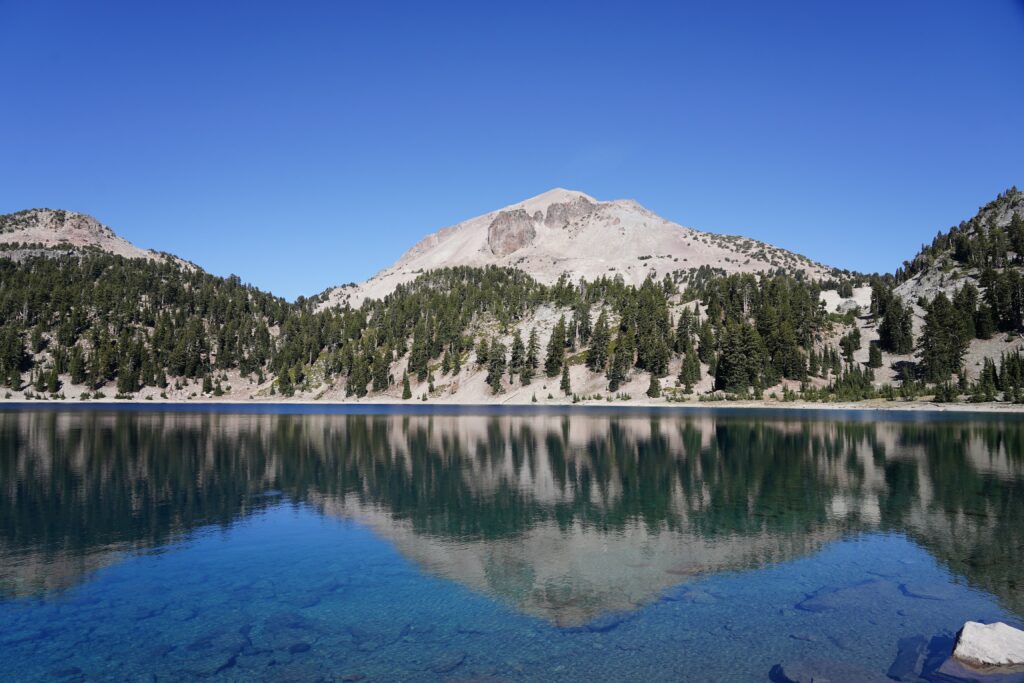
Lassen Volcanic National Park, nestled in the heart of California, is a testament to nature’s raw power and beauty. The park boasts an array of geothermal wonders, from bubbling mud pots to steaming fumaroles, showcasing the Earth’s dynamic forces at play.
For hiking enthusiasts, Lassen offers a plethora of trails that cater to all skill levels. Whether you’re seeking a leisurely walk through lush meadows or a challenging ascent up Lassen Peak, there’s a trail for everyone.
Each path unveils a unique facet of the park’s diverse landscape, from serene lakes to vast volcanic terrains.
Camping in Lassen is an experience in itself. With multiple campgrounds to choose from, visitors can immerse themselves in the wilderness, gazing at starlit skies and waking up to the melodies of nature. The park’s remote location ensures a tranquil escape from the hustle and bustle of daily life.
Visitors often rave about the park’s unparalleled beauty and the sense of tranquility it offers. The harmonious blend of volcanic landscapes, verdant forests, and pristine waters creates a haven for nature lovers. It’s no wonder that Lassen Volcanic National Park remains a cherished destination for many.
Continue Reading the next part here: National Parks in USA – part 2
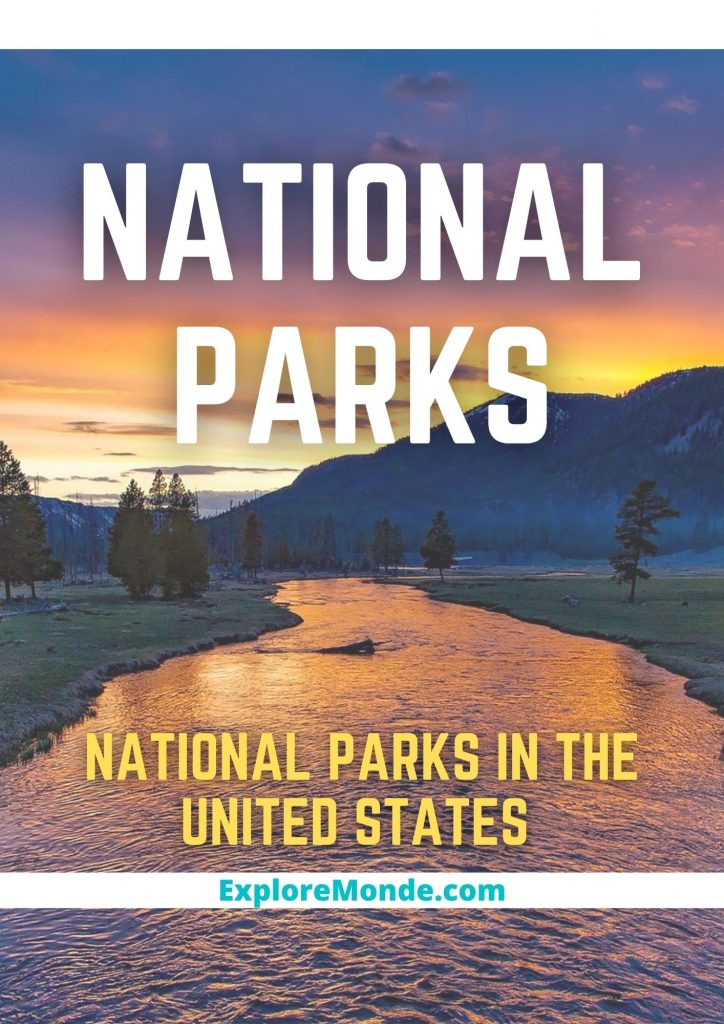
Note: The hours of operation, ticket prices, and admission criteria of museums, parks, etc. may change from time to time. For the most updated information, we recommend checking the official website of the attraction directly prior to your planned visit.
Categories: Asia | Africa | Europe | USA | Australia & New Zealand | France | Germany | India | Italy | Spain | Sports | Switzerland | Travel Tips | UK | Products | Download AI Trip Planner App
Page Contents


